Olympic Games
Introduction
athletic festival that originated in ancient Greece (ancient Greek civilization) and was revived in the late 19th century. Before the 1970s the Games were officially limited to competitors with amateur status, but in the 1980s many events were opened to professional athletes. Currently the Games are open to all, even the top professional athletes in basketball and football (soccer). The ancient Olympic Games included several of the sports that are now part of the Summer Games program, which at times has included events in as many as 32 different sports. In 1924 the Winter Games were sanctioned for winter sports. The Olympic Games have come to be regarded as the world's foremost sports competition. For coverage of the 2008 Olympics, see Beijing 2008 Olympic Games: Mount Olympus Meets the Middle Kingdom.
The ancient Olympic Games
Origins
 Just how far back in history organized athletic contests were held remains a matter of debate, but it is reasonably certain that they occurred in Greece almost 3,000 years ago. However ancient in origin, by the end of the 6th century BC at least four Greek sporting festivals, sometimes called “classical games,” had achieved major importance: the Olympic Games, held at Olympia; the Pythian Games at Delphi; the Nemean Games at Nemea; and the Isthmian Games, held near Corinth. Later, similar festivals were held in nearly 150 cities as far afield as Rome, Naples, Odessus, Antioch, and Alexandria.
Just how far back in history organized athletic contests were held remains a matter of debate, but it is reasonably certain that they occurred in Greece almost 3,000 years ago. However ancient in origin, by the end of the 6th century BC at least four Greek sporting festivals, sometimes called “classical games,” had achieved major importance: the Olympic Games, held at Olympia; the Pythian Games at Delphi; the Nemean Games at Nemea; and the Isthmian Games, held near Corinth. Later, similar festivals were held in nearly 150 cities as far afield as Rome, Naples, Odessus, Antioch, and Alexandria.Of all the games held throughout Greece, the Olympic Games were the most famous. Held every four years between August 6 and September 19, they occupied such an important place in Greek history that in late antiquity historians measured time by the interval between them—an Olympiad. The Olympic Games, like almost all Greek games, were an intrinsic part of a religious festival. They were held in honour of Zeus at Olympia by the city-state of Elis in the northwestern Peloponnese. The first Olympic champion listed in the records was Coroebus of Elis, a cook, who won the sprint race in 776 BC. Notions that the Olympics began much earlier than 776 BC are founded on myth, not historical evidence. According to one legend, for example, the Games were founded by Heracles, son of Zeus and Alcmene.
Competition and status
At the meeting in 776 BC there was apparently only one event, a footrace that covered one length of the track at Olympia, but other events were added over the ensuing decades. The race, known as the stade, was about 192 metres (210 yards) long. The word stade also came to refer to the track on which the race was held and is the origin of the modern English word stadium. In 724 BC a two-length race, the diaulos, roughly similar to the 400-metre race, was included, and four years later the dolichos, a long-distance race possibly comparable to the modern 1,500- or 5,000-metre events, was added. wrestling and the pentathlon were introduced in 708 BC. The latter was an all-around competition consisting of five events—the long jump, the javelin throw, the discus throw, a footrace, and wrestling.
boxing was introduced in 688 BC and chariot racing eight years later. In 648 BC the pancratium (from Greek pankration), a kind of no-holds-barred combat, was included. This brutal contest combined wrestling, boxing, and street fighting. Kicking and hitting a downed opponent were allowed; only biting and gouging (thrusting a finger or thumb into an opponent's eye) were forbidden. Between 632 and 616 BC events for boys were introduced. And from time to time further events were added, including a footrace in which athletes ran in partial armour and contests for heralds and for trumpeters. The program, however, was not nearly so varied as that of the modern Olympics. There were neither team games nor ball games, and the athletics (track and field) events were limited to the four running events and the pentathlon mentioned above. Chariot races and horse racing, which became part of the ancient Games, were held in the hippodrome south of the stadium.
In the early centuries of Olympic competition, all the contests took place on one day; later the Games were spread over four days, with a fifth devoted to the closing-ceremony presentation of prizes and a banquet for the champions. In most events the athletes participated in the nude. Through the centuries scholars have sought to explain this practice. Theories have ranged from the eccentric (to be nude in public without an erection demonstrated self-control) to the usual anthropological, religious, and social explanations, including the following: (1) nudity bespeaks a rite of passage, (2) nudity was a holdover from the days of hunting and gathering, (3) nudity had, for the Greeks, a magical power to ward off harm, and (4) public nudity was a kind of costume of the upper class. Historians grasp at dubious theories because, in Judeo-Christian society, to compete nude in public seems odd, if not scandalous. Yet ancient Greeks found nothing shameful about nudity, especially male nudity. Therefore, the many modern explanations of Greek athletic nudity are in the main unnecessary.
The Olympic Games were technically restricted to freeborn Greeks. Many Greek competitors came from the Greek colonies on the Italian peninsula and in Asia Minor and Africa. Most of the participants were professionals who trained full-time for the events. These athletes earned substantial prizes for winning at many other preliminary festivals, and, although the only prize at Olympia was a wreath or garland, an Olympic champion also received widespread adulation and often lavish benefits from his home city.
Women and the Olympic Games
Although there were no women's events in the ancient Olympics, several women appear in the official lists of Olympic victors as the owners of the stables of some victorious chariot entries. In Sparta, girls and young women did practice and compete locally. But, apart from Sparta, contests for young Greek women were very rare and probably limited to an annual local footrace. At Olympia, however, the Herean festival, held every four years in honour of the goddess Hera, included a race for young women, who were divided into three age groups. Yet the Herean race was not part of the Olympics (they took place at another time of the year) and probably was not instituted before the advent of the Roman Empire. Then for a brief period girls competed at a few other important athletic venues.
The 2nd-century-AD traveler Pausanias wrote that women were banned from Olympia during the actual Games under penalty of death. Yet he also remarked that the law and penalty had never been invoked. His account later incongruously stated that unmarried women were allowed as Olympic spectators. Many historians believe that a later scribe simply made an error copying this passage of Pausanias's text here. Nonetheless, the notion that all or only married women were banned from the Games endured in popular writing on the topic, though the evidence regarding women as spectators remains unclear.
Demise of the Olympics
Greece lost its independence to Rome (ancient Rome) in the middle of the 2nd century BC, and support for the competitions at Olympia and elsewhere fell off considerably during the next century. The Romans looked on athletics with contempt—to strip naked and compete in public was degrading in their eyes. The Romans realized the political value of the Greek festivals, however, and Emperor Augustus staged games for Greek athletes in a temporary wooden stadium erected near the Circus Maximus in Rome and instituted major new athletic festivals in Italy and in Greece. Emperor Nero was also a keen patron of the festivals in Greece, but he disgraced himself and the Olympic Games when he entered a chariot race (chariot racing), fell off his vehicle, and then declared himself the winner anyway.
Romans neither trained for nor participated in Greek athletics. Roman gladiator shows and team chariot racing were not related to the Olympic Games or to Greek athletics. The main difference between the Greek and Roman attitudes is reflected in the words each culture used to describe its festivals: for the Greeks they were contests (agōnes), while for the Romans they were games (ludi). The Greeks originally organized their festivals for the competitors, the Romans for the public. One was primarily competition, the other entertainment. The Olympic Games were finally abolished about AD 400 by the Roman emperor Theodosius I or his son because of the festival's pagan associations.
The modern Olympic movement
Revival of the Olympics
The ideas and work of several people led to the creation of the modern Olympics. The best-known architect of the modern Games was Pierre, baron de Coubertin (Coubertin, Pierre, baron de), born in Paris on New Year's Day, 1863. Family tradition pointed to an army career or possibly politics, but at age 24 Coubertin decided that his future lay in education, especially physical education. In 1890 he traveled to England to meet Dr. William Penny Brookes, who had written some articles on education that attracted the Frenchman's attention. Brookes also had tried for decades to revive the ancient Olympic Games, getting the idea from a series of modern Greek Olympiads held in Athens starting in 1859. The Greek Olympics were founded by Evangelis Zappas, who, in turn, got the idea from Panagiotis Soutsos, a Greek poet who was the first to call for a modern revival and began to promote the idea in 1833. Brookes's first British Olympiad, held in London in 1866, was successful, with many spectators and good athletes in attendance. But his subsequent attempts met with less success and were beset by public apathy and opposition from rival sporting groups. Rather than give up, in the 1880s Brookes began to argue for the founding of international Olympics in Athens.
When Coubertin sought to confer with Brookes about physical education, Brookes talked more about Olympic revivals and showed him documents relating to both the Greek and the British Olympiads. He also showed Coubertin newspaper articles reporting his own proposal for international Olympic Games. On November 25, 1892, at a meeting of the Union des Sports Athlétiques in Paris, with no mention of Brookes or these previous modern Olympiads, Coubertin himself advocated the idea of reviving the Olympic Games, and he propounded his desire for a new era in international sport when he said:
Let us export our oarsmen, our runners, our fencers into other lands. That is the true Free Trade of the future; and the day it is introduced into Europe the cause of Peace will have received a new and strong ally.
He then asked his audience to help him in “the splendid and beneficent task of reviving the Olympic Games.” The speech did not produce any appreciable activity, but Coubertin reiterated his proposal for an Olympic revival in Paris in June 1894 at a conference on international sport attended by 79 delegates representing 49 organizations from 9 countries. Coubertin himself wrote that, except for his coworkers Dimítrios Vikélas of Greece, who was to be the first president of the International Olympic Committee, and Professor William M. Sloane of the United States, from the College of New Jersey (later Princeton University), no one had any real interest in the revival of the Games. Nevertheless, and to quote Coubertin again, “a unanimous vote in favour of revival was rendered at the end of the Congress chiefly to please me.”
It was at first agreed that the Games should be held in Paris in 1900. Six years seemed a long time to wait, however, and it was decided (how and by whom remains obscure) to change the venue to Athens and the date to April 1896. A great deal of indifference, if not opposition, had to be overcome, including a refusal by the Greek prime minister to stage the Games at all. But when a new prime minister took office, Coubertin and Vikélas were able to carry their point, and the Games were opened by the king of Greece in the first week of April 1896, on Greek Independence Day.
Organization
The International Olympic Committee
At the Congress of Paris in 1894, the control and development of the modern Olympic Games were entrusted to the International Olympic Committee (IOC; Comité International Olympique). During World War I Coubertin moved its headquarters to Lausanne, Switzerland, where they have remained. The IOC is responsible for maintaining the regular celebration of the Olympic Games, seeing that the Games are carried out in the spirit that inspired their revival, and promoting the development of sports throughout the world. The original committee in 1894 consisted of 14 members and Coubertin.
IOC members are regarded as ambassadors from the committee to their national sports organizations. They are in no sense delegates to the committee and may not accept, from the government of their country or from any organization or individual, any instructions that in any way affect their independence.
The IOC is a permanent organization that elects its own members. Reforms in 1999 set the maximum membership at 115, of whom 70 are individuals, 15 current Olympic athletes, 15 national Olympic committee presidents, and 15 international sports federation presidents. The members are elected to renewable eight-year terms, but they must retire at age 70. Term limits were also applied to future presidents.
International Olympic Committee presidents International Olympic Committee presidentsThe IOC elects its president for a period of eight years, at the end of which the president is eligible for reelection for further periods of four years each. The executive board of 15 members holds periodic meetings with the international federations and national Olympic committees. The IOC as a whole meets annually, and a meeting can be convened at any time that one-third of the members so request.
The awarding of the Olympic Games
The honour of holding the Olympic Games is entrusted to a city, not to a country. The choice of the city lies solely with the IOC. Application to hold the Games is made by the chief authority of the city, with the support of the national government.
Sites of the modern Olympic Games Sites of the modern Olympic GamesApplications must state that no political meetings or demonstrations will be held in the stadium or other sports grounds or in the Olympic Village. Applicants also promise that every competitor shall be given free entry without any discrimination on grounds of religion, colour, or political affiliation. This involves the assurance that the national government will not refuse visas to any of the competitors. At the Montreal Olympics in 1976, however, the Canadian government refused visas to the representatives of Taiwan because they were unwilling to forgo the title of the Republic of China, under which their national Olympic committee had been admitted to the IOC. This Canadian decision, in the opinion of the IOC, did great damage to the Olympic Games, and it was later resolved that any country in which the Games are organized must undertake to strictly observe the rules. It was acknowledged that enforcement would be difficult, and even the use of severe penalties by the IOC might not guarantee elimination of infractions.
Corruption
In December 1998 the sporting world was shocked by allegations of widespread corruption within the IOC (International Olympic Committee). It was charged that IOC members had accepted bribes (bribery)—in the form of cash, gifts, entertainment, business favours, travel expenses, medical expenses, and even college tuition for members' children—from members of the committee that had successfully advanced the bid of Salt Lake City, Utah, as the site for the 2002 Winter Games. Accusations of impropriety were also alleged in the conduct of several previous bid committees. The IOC responded by expelling six committee members; several others resigned. In December 1999 an IOC commission announced a 50-point reform package covering the selection and conduct of the IOC members, the bid process, the transparency of financial dealings, the size and conduct of the Games, and drug regulation. The reform package also contained a number of provisions regulating the site-selection process and clarifying the obligations of the IOC, the bid cities, and the national Olympic committees. An independent IOC Ethics Commission also was established.
Political pressures
Because the Olympics take place on an international stage, it is not surprising that they have been plagued by the nationalism, manipulation, and propaganda associated with world politics. Attempts to politicize the Olympics were evident as early as the first modern Games at Athens in 1896, when the British compelled an Australian athlete to declare himself British. Other prominent examples of the politicization of the Games include the Nazi propaganda that pervaded the Berlin Games of 1936; the Soviet-Hungarian friction at the 1956 Games in Melbourne, Australia, which followed shortly after the U.S.S.R. had brutally suppressed a revolution in Hungary that year; the forbidden, unofficial, but prominent contests for “points” (medals counts) between the United States and the Soviet Union during the height of the Cold War; the controversy between China and Taiwan leading up to the 1976 Montreal Games; the manifold disputes resulting from South Africa's apartheid policy from 1968 to 1988; the U.S.-led boycott of the 1980 Moscow Games (in protest of the Soviet invasion of Afghanistan in 1979), followed by the retaliatory boycott of the 1984 Los Angeles Games by the Soviet bloc; and, worst of all, the murder of Israeli athletes by terrorists at the 1972 Games in Munich, West Germany.
Even national politics has affected the Games, most notably in 1968 in Mexico City, where, shortly before the Games opened, Mexican troops fired upon Mexican students (killing hundreds) who were protesting government expenditures on the Olympics while the country had pressing social problems. Political tension within the United States also boiled to the top at Mexico City when African American athletes either boycotted the Games or staged demonstrations to protest continuing racism at home.
In the latter half of the 20th century, the IOC sought to more actively promote peace through sports. The IOC and relevant Olympic organizing committees worked with political leaders to allow the participation of former Yugoslav republics at the 1992 Games in Barcelona, Spain, as well as the participation of East Timorese and Palestinian athletes at the 2000 Games in Sydney, Australia. In 2000 the IOC revived and modernized the ancient Olympic truce, making it the focal point of its peace initiatives. (See Sidebar: The Olympic Truce.)
Commercialization
Commercialism has never been wholly absent from the Games, but two large industries have eclipsed all others—namely, television and makers of sports apparel, especially shoes. The IOC, organizing committees of the Olympic Games (OCOGs), and to some degree the international sport federations depend heavily on television revenues, and many of the best athletes depend on money from apparel endorsements. Vigorous bidding for the television rights began in earnest before the Rome Games in 1960; what have been called the “sneaker wars” started an Olympiad later in Tokyo.
The Los Angeles Games of 1984, however, ushered in a new Olympic era. In view of Montreal's huge financial losses from the 1976 Olympics, Peter Ueberroth, head of the Los Angeles OCOG, sold exclusive “official sponsor” rights to the highest bidder in a variety of corporate categories. Now almost everything is commercialized with “official” items ranging from credit cards to beer. And while American decathlete Bill Toomey lost his Olympic eligibility in 1964 for endorsing a nutritional supplement, now athletes openly endorse allergy medicines and blue jeans.
National Olympic committees, international federations, and organizing committees
Each country that desires to participate in the Olympic Games must have a national Olympic committee accepted by the IOC. By the early 21st century, there were more than 200 such committees.
A national Olympic committee (NOC) must be composed of at least five national sporting federations, each affiliated with an appropriate international federation. The ostensible purpose of these NOCs is the development and promotion of the Olympic movement. NOCs arrange to equip, transport, and house their country's representatives at the Olympic Games. According to the rules of the NOCs, they must be not-for-profit organizations, must not associate themselves with affairs of a political or commercial nature, and must be completely independent and autonomous as well as in a position to resist all political, religious, or commercial pressure.
For each Olympic sport there must be an international federation (IF), to which a requisite number of applicable national governing bodies must belong. The IFs promote and regulate their sport on an international level. Since 1986 they have been responsible for determining all questions of Olympic eligibility and competition in their sport. The International Federation of Rowing Associations was founded in 1892, even before the IOC. In 1912 Sigfrid Edström, later president of the IOC, founded the IF for athletics (track and field), the earliest of Olympic sports and perhaps the Games' special focus. Because such sports as football (soccer) and basketball attract great numbers of participants and spectators in all parts of the world, their respective IFs possess great power and sometimes exercise it.
When the IOC awards the Olympic Games to a city, an organizing committee for the Olympic Games (OCOG) replaces the successful bid committee, often including many of that committee's members. Although the IOC retains ultimate authority over all aspects of an Olympiad, the local OCOG has full responsibility for the festival, including finance, facilities, staffing, and accommodations.
In Paris in 1924, a number of cabins were built near the stadium to house visiting athletes; the complex was called “Olympic Village.” But the first Olympic Village with kitchens, dining rooms, and other amenities was introduced at Los Angeles in 1932. Now each organizing committee provides such a village so that competitors and team officials can be housed together and fed at a reasonable price. Menus for each team are prepared in accord with its own national cuisine. Today, with so many athletes and venues, OCOGs may need to provide more than one village. The villages are located as close as possible to the main stadium and other venues and have separate accommodations for men and women. Only competitors and officials may live in the village, and the number of team officials is limited.
Programs and participation
The Olympic Games celebrate an Olympiad, or period of four years. The first Olympiad of modern times was celebrated in 1896, and subsequent Olympiads are numbered consecutively, even when no Games take place (as was the case in 1916, 1940, and 1944).
Olympic Winter Games have been held separately from the Games of the Olympiad (Summer Games) since 1924 and were initially held in the same year. In 1986 the IOC voted to alternate the Winter and Summer Games every two years, beginning in 1994. The Winter Games were held in 1992 and again in 1994 and thereafter every four years; the Summer Games maintained their original four-year cycle.
The maximum number of entries permitted for individual events is three per country. The number is fixed (but can be varied) by the IOC in consultation with the international federation concerned. In most team events only one team per country is allowed. In general, an NOC may enter only a citizen of the country concerned. There is no age limit for competitors unless one has been established by a sport's international federation. No discrimination is allowed on grounds of “race,” religion, or political affiliation. The Games are contests between individuals and not between countries.
The Summer Olympic program includes the following sports: aquatics (including swimming, synchronized swimming, diving, and water polo), archery, athletics (track and field), badminton, baseball, basketball, boxing, canoeing and kayaking, cycling, equestrian sports, fencing, field hockey, football (soccer), gymnastics, team handball, judo, modern pentathlon, rowing, sailing (formerly yachting), shooting, softball, table tennis, tae kwon do, tennis, triathlon, volleyball, weightlifting, and wrestling. Women participate in all these sports except baseball and boxing. Men do not compete in softball and synchronized swimming. The Winter Olympic program includes sports played on snow or ice: biathlon, bobsledding, curling, ice hockey, ice skating (figure skating and speed skating), luge, skeleton (headfirst) sledding, skiing, ski jumping, and snowboarding. Athletes of either gender may compete in all these sports. An Olympic program must include national exhibitions and demonstrations of fine arts (architecture, literature, music, painting, sculpture, photography, and sports philately).
The particular events included in the different sports are a matter for agreement between the IOC and the international federations. In 2005 the IOC reviewed the summer sports program, and members voted to drop baseball and softball from the 2012 Games. While sports such as rugby and karate were considered, none won the 75 percent favourable vote needed for inclusion.
To be allowed to compete, an athlete must meet the eligibility requirements as defined by the international body of the particular sport and also by the rules of the IOC.
Amateurism versus professionalism
In the final decades of the 20th century there was a shift in policy away from the IOC's traditionally strict definition of amateur status. In 1971 the IOC decided to eliminate the term amateur from the Olympic Charter. Subsequently the eligibility rules were amended to permit “broken-time” payments to compensate athletes for time spent away from work during training and competition. The IOC also legitimized the sponsorship of athletes by NOCs, sports organizations, and private businesses. In 1984 some of the world's best athletes were still banned from the Games because they competed for money, but in 1986 the IOC adopted rules that permit the international federation governing each Olympic sport to decide whether to permit professional athletes in Olympic competition. Professionals in ice hockey, tennis, soccer, and equestrian sports were permitted to compete in the 1988 Olympics, although their eligibility was subject to some restrictions. By the 21st century the presence of professional athletes at the Olympic Games was common.
Doping and drug testing
At the 1960 Rome Olympics, a Danish cyclist collapsed and died after his coach had given him amphetamines. Formal drug tests seemed necessary and were instituted at the 1968 Winter Games in Grenoble, France. There only one athlete was disqualified for taking a banned substance—beer. But in the 1970s and ′80s athletes tested positive for a variety of performance-enhancing drugs, and since the ′70s doping has remained the most difficult challenge facing the Olympic movement. As the fame and potential monetary gains for Olympic champions grew in the latter half of the 20th century, so too did the use of performance-enhancing drugs. Tests for anabolic steroids (anabolic steroid) and other substances improved, but so did doping practices, with the design of new substances often a year or two ahead of the new tests. When 100-metre-sprint champion Ben Johnson of Canada tested positive for the drug stanozolol at the 1988 Summer Games in Seoul, South Korea, the world was shocked, and the Games themselves were tainted. To more effectively police doping practices, the IOC formed the World Anti-Doping Agency in 1999. There is now a long list of banned substances and a thorough testing process. Blood and urine samples are collected from athletes before and after competition and sent to a lab for testing. Positive tests for banned substances lead to disqualification, and athletes may be banned from competition for periods ranging from a year to life. Yet, despite the harsh penalties and threat of public humiliation, athletes continue to test positive for banned substances.
Ritual and symbolism
Olympic ceremonies
The opening ceremony
The form of the opening ceremony is laid down by the IOC in great detail, from the moment when the chief of state of the host country is received by the president of the IOC and the organizing committee at the entrance to the stadium to the end of the proceedings, when the last team files out.
When the head of state has reached the appointed place in the tribune and is greeted with the national anthem, the parade of competitors begins. The Greek team is always the first to enter the stadium, and, except for the host team, which is always last, the other countries follow in alphabetical order as determined by the language of the organizing country. Each contingent, dressed in its official uniform, is preceded by a shield with the name of its country, while an athlete carries its national flag. At the 1980 Games, some of the countries protesting the Soviet Union (Union of Soviet Socialist Republics)'s invasion of Afghanistan the previous year carried the Olympic flag in place of their national flag, in deference to a boycott of those Games by other countries. The competitors march around the stadium and then form in groups in the centre facing the tribune.
The president of the OCOG then delivers a brief speech of welcome, followed by another brief speech from the president of the IOC, who asks the chief of state to proclaim the Games open.
A fanfare of trumpets sound as the Olympic flag is slowly raised. The Olympic flame is then carried into the stadium by the last of a series of runners who have brought the torch on a very long journey from Olympia, Greece. The runner circles the track, mounts the steps, and lights the Olympic fire that burns night and day during the Games.
The medal ceremonies
In individual Olympic events, the award for first place is a gold (silver-gilt, with six grams of fine gold) medal, for second place a silver medal, and for third place a bronze medal. Solid gold medals were last given in 1912. The obverse side of the medal awarded in 2004 at Athens was altered for the first time since 1928 to better reflect the Greek origins of both the ancient and modern Games, depicting the goddess Nike flying above a Greek stadium. The reverse side, changed for each Olympiad, often displayed the official emblem of the particular Games. At the 2004 Athens Games, athletes received authentic olive-leaf crowns as well as medals. Diplomas are awarded for fourth, fifth, sixth, seventh, and eighth places. All competitors and officials receive a commemorative medal.
Medals are presented during the Games at the various venues, usually soon after the conclusion of each event. The competitors who have won the first three places proceed to the rostrum, with the gold medalist in the centre, the silver medalist on his or her right, and the bronze medalist on the left. Each medal, attached to a chain or ribbon, is hung around the neck of the winner by a member of the IOC, and the flags of the countries concerned are raised to the top of the flagpoles while an abbreviated form of the national anthem of the gold medalist is played. The spectators are expected to stand and face the flags, as do the three successful athletes.
The closing ceremony
The closing ceremony takes place after the final event, which at the Summer Games is usually the equestrian Prix des Nations. The president of the IOC calls the youth of the world to assemble again in four years to celebrate the Games of the next Olympiad. A fanfare is sounded, the Olympic fire is extinguished, and, to the strains of the Olympic anthem, the Olympic flag is lowered and the Games are over. But the festivities do not end there. The 1956 Olympics in Melbourne introduced one of the most important and effective of all Olympic customs. At the suggestion of John Ian Wing, a Chinese teenager living in Australia, the traditional parade of athletes divided into national teams was discarded, allowing athletes to mingle, many hand in hand, as they move around the stadium. This informal parade of athletes without distinction of nationality signifies the friendly bonds of Olympic sports and helps to foster a party atmosphere in the stadium.
Olympic symbols
The flag
In the stadium and its immediate surroundings, the Olympic flag (Olympic Games, flag of the) is flown freely together with the flags of the participating countries. The Olympic flag presented by Coubertin in 1914 is the prototype: it has a white background, and in the centre there are five interlaced rings—blue, yellow, black, green, and red. The blue ring is farthest left, nearest the pole. These rings represent the “five parts of the world” joined together in the Olympic movement.
The motto
In the 19th century, sporting organizations regularly chose a distinctive motto. As the official motto of the Olympic Games, Coubertin adopted “Citius, altius, fortius,” Latin for “Faster, higher, stronger,” a phrase apparently coined by his friend Henri Didon, a friar, teacher, and athletics enthusiast. Some people are now wary of this motto, fearing that it may be misinterpreted as a validation of performance-enhancing drugs. Equally well known is the saying known as the “credo”: “The most important thing in the Olympic Games is not to win but to participate.” Coubertin made that statement on a day when the British and Americans were bitterly disputing who had won the 400-metre race at the 1908 London Games. Although Coubertin attributed the words to Ethelbert Talbot, an American bishop, recent research suggests that the words are Coubertin's own, that he tactfully cited Talbot so as not to appear to admonish personally his English-speaking friends.
The flame and torch relay
 Contrary to popular belief, the torch relay from the temple of Hera in Olympia to the host city has no predecessor or parallel in antiquity. No relay was needed to run the torch from Olympia to Olympia. A perpetual fire was indeed maintained in Hera's temple, but it had no role in the ancient Games. The Olympic flame first appeared at the 1928 Olympics in Amsterdam. The torch relay was the idea of Carl Diem, organizer of the 1936 Berlin Games, where the relay made its debut. Subsequent editions have grown larger and larger, with more runners, more spectators, and greater distances. The 2004 relay reached all seven continents on its way from Olympia to Athens. The relay is now one of the most splendid and cherished of all Olympic rituals; it emphasizes not only the ancient source of the Olympics but also the internationalism of the modern Games. The flame is now recognized everywhere as an emotionally charged symbol of peace.
Contrary to popular belief, the torch relay from the temple of Hera in Olympia to the host city has no predecessor or parallel in antiquity. No relay was needed to run the torch from Olympia to Olympia. A perpetual fire was indeed maintained in Hera's temple, but it had no role in the ancient Games. The Olympic flame first appeared at the 1928 Olympics in Amsterdam. The torch relay was the idea of Carl Diem, organizer of the 1936 Berlin Games, where the relay made its debut. Subsequent editions have grown larger and larger, with more runners, more spectators, and greater distances. The 2004 relay reached all seven continents on its way from Olympia to Athens. The relay is now one of the most splendid and cherished of all Olympic rituals; it emphasizes not only the ancient source of the Olympics but also the internationalism of the modern Games. The flame is now recognized everywhere as an emotionally charged symbol of peace.Mascots
The organizers of the 1968 Winter Olympics in Grenoble, France, devised as an emblem of their Games a cartoonlike figure of a skiing man and called him Schuss. The 1972 Games in Munich, West Germany, adopted the idea and produced the first “official mascot,” a dachshund named Waldi who appeared on related publications and memorabilia. Since then each edition of the Olympic Games has had its own distinctive mascot, sometimes more than one. Typically the mascot is derived from characters or animals especially associated with the host country. Thus, Moscow chose a bear, Norway two figures from Norwegian mythology, and Sydney three animals native to Australia. The strangest mascot was Whatizit, or Izzy, of the 1996 Games in Atlanta, Georgia, a rather amorphous “abstract fantasy figure.” His name comes from people asking “What is it?” He gained more features as the months went by, but his uncertain character and origins contrast strongly with the Athena and Phoebus (Apollo) of the Athens Games of 2004, based on figurines of those gods that were more than 2,500 years old.
History of the modern Summer Games
Athens, Greece, 1896
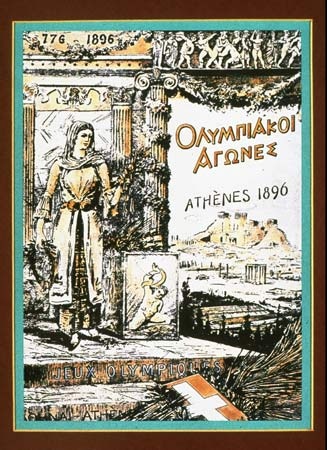 The inaugural Games of the modern Olympics were attended by as many as 280 athletes, all male, coming from 12 countries. The athletes competed in 43 events covering athletics (track and field), cycling, swimming, gymnastics, weightlifting, wrestling, fencing, shooting, and tennis. A festive atmosphere prevailed as foreign athletes were greeted with parades and banquets. A crowd estimated at more than 60,000 attended the opening day of competition. Members of the royal family of Greece played an important role in the organization and management of the Games and were regular spectators over the 10 days of the Olympics. Hungary sent the only national team; most of the foreign athletes were well-to-do college students or members of athletic clubs attracted by the novelty of the Olympics.
The inaugural Games of the modern Olympics were attended by as many as 280 athletes, all male, coming from 12 countries. The athletes competed in 43 events covering athletics (track and field), cycling, swimming, gymnastics, weightlifting, wrestling, fencing, shooting, and tennis. A festive atmosphere prevailed as foreign athletes were greeted with parades and banquets. A crowd estimated at more than 60,000 attended the opening day of competition. Members of the royal family of Greece played an important role in the organization and management of the Games and were regular spectators over the 10 days of the Olympics. Hungary sent the only national team; most of the foreign athletes were well-to-do college students or members of athletic clubs attracted by the novelty of the Olympics.The track-and-field events were held at the Panathenaic Stadium. The stadium, originally built in 330 BC, had been excavated but not rebuilt for the 1870 Greek Olympics and lay in disrepair before the 1896 Olympics, but through the direction and financial aid of Georgios Averoff, a wealthy Egyptian Greek, it was restored with white marble. The ancient track had an unusually elongated shape with such sharp turns that runners were forced to slow down considerably in order to stay in their lanes. The track-and-field competition was dominated by athletes from the United States, who won 9 of the 12 events. The swimming events were held in the cold currents of the Bay of Zea. Two of the four swimming races were won by Alfréd Hajós (Hajós, Alfréd) of Hungary. Paul Masson of France won three of the six cycling events.
The 1896 Olympics featured the first marathon. The race, conceived by Frenchman Michel Bréal, followed the legendary route of Pheidippides, a trained runner who was believed to have been sent from the plain of Marathon to Athens to announce the defeat of an invading Persian army in 490 BC. The race became the highlight of the Games and was won by Spyridon Louis (Louis, Spyridon), a Greek whose victory earned him the lasting admiration of his nation.
Paris, France, 1900
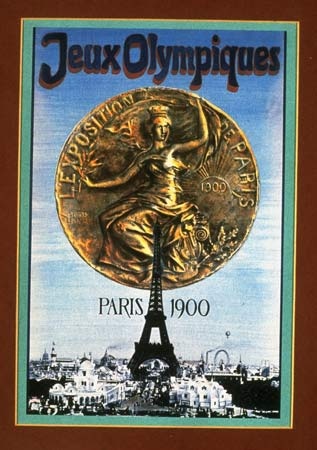 The second modern Olympic competition was relegated to a sideshow of the World Exhibition, which was being held in Paris in the summer of 1900. Pierre, baron de Coubertin, founder of the modern Olympics and president of the International Olympic Committee (IOC), lost control of his hometown Games to the French government. The Games suffered from poor organization and marketing, with events conducted over a period of five months in venues that often were inadequate. The track-and-field events were held on a grass field that was uneven and often wet. Broken telephone poles were used to make hurdles, and hammer throwers occasionally found their efforts stuck in a tree. The swimming events were contested in the Seine River, whose strong current carried athletes to unrealistically fast times. There was such confusion about schedules that few spectators or journalists were present at the events. Officials and athletes often were unaware that they were participating in the Olympics. See Sidebar: Margaret Abbott: A Study Break.
The second modern Olympic competition was relegated to a sideshow of the World Exhibition, which was being held in Paris in the summer of 1900. Pierre, baron de Coubertin, founder of the modern Olympics and president of the International Olympic Committee (IOC), lost control of his hometown Games to the French government. The Games suffered from poor organization and marketing, with events conducted over a period of five months in venues that often were inadequate. The track-and-field events were held on a grass field that was uneven and often wet. Broken telephone poles were used to make hurdles, and hammer throwers occasionally found their efforts stuck in a tree. The swimming events were contested in the Seine River, whose strong current carried athletes to unrealistically fast times. There was such confusion about schedules that few spectators or journalists were present at the events. Officials and athletes often were unaware that they were participating in the Olympics. See Sidebar: Margaret Abbott: A Study Break.Nevertheless, the Games were attended by nearly 1,000 athletes representing 24 countries. There was an infusion of new events, some of which were not officially part of the Olympic program or were later discontinued (e.g., golf, rugby, cricket, and croquet). Archery, football (soccer), rowing, and equestrian events were among those introduced at the 1900 Games. Women, competing in sailing, lawn tennis, and golf, participated in the Olympics for the first time even though women's events were not officially approved by the IOC. The confusion surrounding the events led to similar confusion over who was the first woman to win an Olympic gold medal; Swiss yachtswoman Hélène de Pourtalés, tennis player Charlotte Cooper of Great Britain, and golfer Margaret Abbott of the United States could all lay claim to that honour.
Despite the problems of the Paris Games, the quality of athletic performance improved. Athletes from the United States, led by jumper Ray Ewry (Ewry, Ray C.) and sprinter Alvin Kraenzlein (Kraenzlein, Alvin), again dominated the track-and-field competition. American athletes won 17 of the 23 track-and-field events, while French athletes earned more than 100 medals, by far the most for any nation at the 1900 Games.
St. Louis, Missouri, U.S., 1904
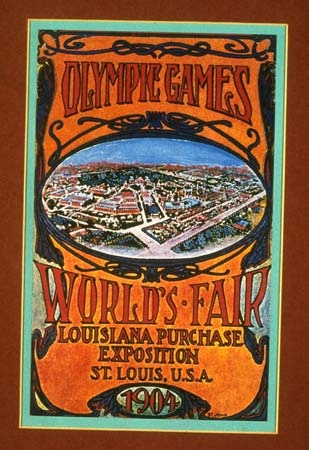 Like the 1900 Olympics in Paris, the 1904 Games took a secondary role. The Games originally were scheduled for Chicago, but the location was changed to St. Louis when Olympic organizing committee officials decided to combine the Olympics with the Louisiana Purchase Exhibition, a large fair celebrating the 100th anniversary of the U.S. acquisition of the Louisiana Territory. As a result, the Games suffered. Several events became part of an “anthropological” exhibition in which American Indians, Pygmies, and other “tribal” peoples competed in events such as mud fighting and pole climbing. The Games were poorly attended by both spectators and athletes. The remoteness of St. Louis and growing tension in Europe over the Russo-Japanese War kept away many of the world's best athletes. Of the approximately 650 competitors representing 12 countries, fewer than 100 were from outside the United States, and about half of those were from Canada. Even the Olympic founder, the baron de Coubertin, stayed away in 1904.
Like the 1900 Olympics in Paris, the 1904 Games took a secondary role. The Games originally were scheduled for Chicago, but the location was changed to St. Louis when Olympic organizing committee officials decided to combine the Olympics with the Louisiana Purchase Exhibition, a large fair celebrating the 100th anniversary of the U.S. acquisition of the Louisiana Territory. As a result, the Games suffered. Several events became part of an “anthropological” exhibition in which American Indians, Pygmies, and other “tribal” peoples competed in events such as mud fighting and pole climbing. The Games were poorly attended by both spectators and athletes. The remoteness of St. Louis and growing tension in Europe over the Russo-Japanese War kept away many of the world's best athletes. Of the approximately 650 competitors representing 12 countries, fewer than 100 were from outside the United States, and about half of those were from Canada. Even the Olympic founder, the baron de Coubertin, stayed away in 1904.The overall results were predictably lopsided, with Americans earning more than three-fourths of the 95 gold medals and more than 230 medals in all. The track-and-field events, held on the campus of Washington University, featured Ray Ewry (Ewry, Ray C.), who repeated his Paris performance by winning gold medals in all three standing-jump events. American athletes Archie Hahn (Hahn, Archie), Jim Lightbody (Lightbody, Jim), and Harry Hillman each won three gold medals as well. Thomas Kiely of Ireland, who paid his own fare to the Games rather than compete under the British flag, won the gold medal in an early version of the decathlon. Kiely and his competitors performed the 100-yard sprint, shot put, high jump, 880-yard walk, hammer throw, pole vault, 120-yard hurdles, 56-pound weight throw, long jump, and mile run, all in a single day. The swimming events took place in an artificial lake on the fairgrounds. Zoltán Halmay (Halmay, Zoltán) of Hungary and Charles Daniels (Daniels, Charles) of the United States each won two gold medals in individual swimming, while Emil Rausch of Germany won three. boxing made its Olympic debut in 1904.
Athens, Greece, 1906
When Athens served as host of its second International Olympic Games, in 1906, more events were held and more countries participated than in the first three modern Games. With better athletes and more of them, the competition was fierce and entertaining, resulting in the most satisfying Olympics to date. As in the previous Games, Americans dominated the athletic competition, led once again by standing jumper Ray Ewry and thrower Martin Sheridan (Sheridan, Martin). Both had won in St. Louis and would repeat their victories in London. William Sherring of Canada won an emotionally charged marathon.
The 1906 Games, often referred to as the Intercalated Olympic Games, introduced some important permanent Olympic customs, including the parade of the nations' teams in ranks around the track, now the first major event at all opening ceremonies. Olympic scholars agree that, after the fiascoes of 1900 and 1904, the well-organized and highly successful 1906 Athens Olympics probably saved the entire Olympic movement from an early demise.
These Games, however, are not included in the official IOC lists. The rest of the IOC, over Coubertin's objection, had agreed that Athens would hold Olympics every two years in between the other Olympiads. Coubertin feared more Olympics in Greece would bolster the popular proposal that Athens become the permanent Olympic site. He later “vetoed” the results of the 1906 Games and retroactively withdrew IOC status from them, even though he himself had listed them as official IOC Games in his 1906 Olympic Review. In 1948 the IOC executive board, at Avery Brundage's urging and without discussion, rejected a scholarly petition from another IOC member who sought to reinstate the 1906 Games. In 2003 the IOC executive board once more rejected a carefully argued and well-documented petition from the International Society of Olympic Historians asking that the 1906 Games again be recognized as official. As in 1948, the matter was not even submitted to a vote.
London, England, 1908
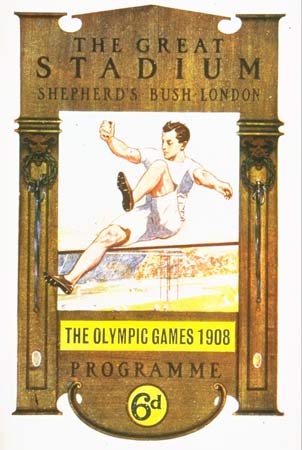 The 1908 Olympic Games originally were scheduled for Rome, but, with Italy beset by organizational and financial obstacles, it was decided that the Games should be moved to London. The London Games were the first to be organized by the various sporting bodies concerned and the first to have an opening ceremony. The parade of athletes, like the Games, was marred by politics and controversy. The Finnish team protested Russian rule in Finland. Many Irish athletes refused to compete as subjects of the British crown and were absent from the Games, and a running feud between the Americans and the British began when the American shot-putter Ralph Rose would not dip the U.S. flag in salute to King Edward VII. This refusal later became standard practice for U.S. athletes in the opening parade. (See Sidebar: Ralph Rose and Martin Sheridan: The Battle of Shepherd's Bush.)
The 1908 Olympic Games originally were scheduled for Rome, but, with Italy beset by organizational and financial obstacles, it was decided that the Games should be moved to London. The London Games were the first to be organized by the various sporting bodies concerned and the first to have an opening ceremony. The parade of athletes, like the Games, was marred by politics and controversy. The Finnish team protested Russian rule in Finland. Many Irish athletes refused to compete as subjects of the British crown and were absent from the Games, and a running feud between the Americans and the British began when the American shot-putter Ralph Rose would not dip the U.S. flag in salute to King Edward VII. This refusal later became standard practice for U.S. athletes in the opening parade. (See Sidebar: Ralph Rose and Martin Sheridan: The Battle of Shepherd's Bush.)Twenty-two countries and about 2,000 athletes participated. The opening ceremony and the majority of events were held at Shepherd's Bush Stadium. New events included diving, motorboating, indoor tennis, and field hockey. The track-and-field events were marked by bickering between American athletes and British officials. The 400-metre final was nullified by officials who disqualified the apparent winner, American John Carpenter, for deliberately impeding the path of Wyndham Halswelle of the United Kingdom. A new race was ordered, but the other qualifiers, both American, refused to run. Halswelle then won the gold in the only walkover in Olympic history. See also Sidebar: Dorando Pietri: Falling at the Finish. Henry Taylor (Taylor, Henry) of the United Kingdom starred in the swimming events, winning three gold medals.
Stockholm, Sweden, 1912
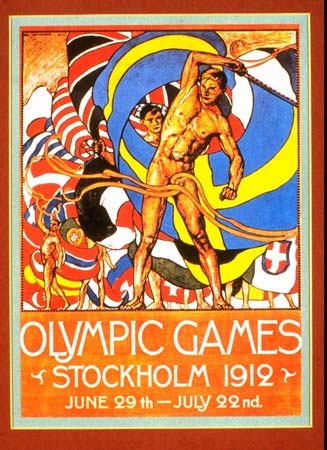 Known as the “Swedish Masterpiece,” the 1912 Olympics were the best organized and most efficiently run Games to that date. Electronic timing devices and a public address system were used for the first time. The Games were attended by approximately 2,400 athletes representing 28 countries. New competition included the modern pentathlon and swimming and diving events for women. The boxing competition was canceled by the Swedish organizers, who found the sport disagreeable; this cancellation, along with controversial officiating at earlier Olympics, prompted the IOC to greatly curtail the role of local organizing groups after 1912.
Known as the “Swedish Masterpiece,” the 1912 Olympics were the best organized and most efficiently run Games to that date. Electronic timing devices and a public address system were used for the first time. The Games were attended by approximately 2,400 athletes representing 28 countries. New competition included the modern pentathlon and swimming and diving events for women. The boxing competition was canceled by the Swedish organizers, who found the sport disagreeable; this cancellation, along with controversial officiating at earlier Olympics, prompted the IOC to greatly curtail the role of local organizing groups after 1912.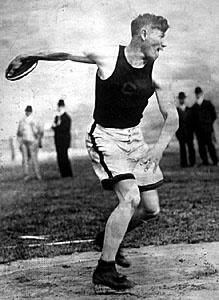 The star of the 1912 Olympics was American Jim Thorpe (Thorpe, Jim). Entered in four events, he began slowly with a fourth-place finish in the high jump and a seventh-place finish in the long jump. In the pentathlon and decathlon, however, Thorpe dominated the events to win two gold medals. The track-and-field competition also featured the long-distance running of Hannes Kolehmainen (Kolehmainen, Hannes) of Finland, who won gold medals in the 5,000- and 10,000-metre runs and the 12,000-metre cross-country race. The 1912 Games marked the Olympic debuts of legendary fencer Nedo Nadi (Nadi brothers) of Italy and American swimmer Duke Paoa Kahanamoku (Kahanamoku, Duke Paoa) of Hawaii.
The star of the 1912 Olympics was American Jim Thorpe (Thorpe, Jim). Entered in four events, he began slowly with a fourth-place finish in the high jump and a seventh-place finish in the long jump. In the pentathlon and decathlon, however, Thorpe dominated the events to win two gold medals. The track-and-field competition also featured the long-distance running of Hannes Kolehmainen (Kolehmainen, Hannes) of Finland, who won gold medals in the 5,000- and 10,000-metre runs and the 12,000-metre cross-country race. The 1912 Games marked the Olympic debuts of legendary fencer Nedo Nadi (Nadi brothers) of Italy and American swimmer Duke Paoa Kahanamoku (Kahanamoku, Duke Paoa) of Hawaii.The 1916 Games, scheduled for Berlin, were canceled because of the outbreak of World War I.
Antwerp, Belgium, 1920
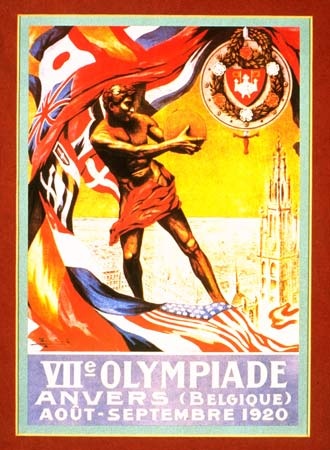 The 1920 Olympics were awarded to Antwerp in hopes of bringing a spirit of renewal to Belgium, which had been devastated during the war. The defeated countries of World War I—Germany, Austria, Hungary, Bulgaria, and Turkey—were not invited. The new Soviet Union chose not to attend.
The 1920 Olympics were awarded to Antwerp in hopes of bringing a spirit of renewal to Belgium, which had been devastated during the war. The defeated countries of World War I—Germany, Austria, Hungary, Bulgaria, and Turkey—were not invited. The new Soviet Union chose not to attend.The city, plagued by bad weather and economic woes, had a very short time to clean up the rubble left by the war and construct new facilities for the Games. The athletics stadium was unfinished when the Games began, and athletes were housed in crowded rooms furnished with folding cots. The events were lightly attended, as few could afford tickets. In the final days, the stands were filled with schoolchildren who were given free admittance.
The Olympic flag (Olympic Games, flag of the) was introduced at the Antwerp Games. More than 2,600 athletes (including more than 60 women) participated in the Games, representing 29 countries. The highlight of the track-and-field competition was the running of Paavo Nurmi (Nurmi, Paavo) of Finland, who battled Joseph Guillemot of France and won three of his nine career gold medals in the 10,000-metre run, the 10,000-metre cross-country individual race, and the cross-country team race. In the 5,000-metre run he finished second to Guillemot (see Sidebar: Joseph Guillemot: Life After War). The Finnish team gave a historic performance, gaining nine gold medals in athletics, one fewer than the U.S. team, which had traditionally dominated the sport.
Italian fencer Nedo Nadi (Nadi brothers) won five gold medals, including individual titles in foil and sabre. The swimming and diving events starred Americans Duke Paoa Kahanamoku (Kahanamoku, Duke Paoa) (two golds), Ethelda Bleibtrey (Bleibtrey, Ethelda) (three golds), and Aileen Riggin (Riggin, Aileen), who at age 14 won the gold medal in springboard diving.
Paris, France, 1924
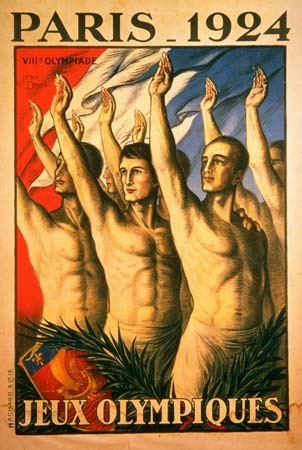 The 1924 Games represented a coming of age for the Olympics. Held in Paris in tribute to the baron de Coubertin, the retiring president of the IOC and founder of the Olympic movement, the Games featured a high calibre of competition. International federations had gained more influence over their respective sports, standardizing the rules of competition, and national Olympic organizations in most countries conducted trials to ensure that the best athletes were sent to compete. More than 3,000 athletes, including more than 100 women, represented a record 44 countries. fencing was added to the women's events, although the total number of events decreased because of a reduction in the number of shooting and yachting competitions.
The 1924 Games represented a coming of age for the Olympics. Held in Paris in tribute to the baron de Coubertin, the retiring president of the IOC and founder of the Olympic movement, the Games featured a high calibre of competition. International federations had gained more influence over their respective sports, standardizing the rules of competition, and national Olympic organizations in most countries conducted trials to ensure that the best athletes were sent to compete. More than 3,000 athletes, including more than 100 women, represented a record 44 countries. fencing was added to the women's events, although the total number of events decreased because of a reduction in the number of shooting and yachting competitions.The Finnish team, led by Paavo Nurmi (Nurmi, Paavo) and Ville Ritola (Ritola, Ville), ruled the distance running races. For the first time, the swimming competition attracted as much attention as track-and-field. The men's events featured a rare collection of talent, including the Kahanamoku (Kahanamoku, Duke Paoa) brothers and Clarence (“Buster”) Crabbe (Crabbe, Buster) of the United States, Andrew (“Boy”) Charlton (Charlton, Boy) of Australia, Yoshiyuki Tsuruta of Japan, and Arne Borg (Borg, Arne) of Sweden. The star of the competition, however, was American Johnny Weissmuller (Weissmuller, Johnny), who won three gold medals as well as a bronze medal as a member of the water polo team. See also Sidebar: Eric Liddell and Harold Abrahams: Chariots of Fire.
Helen Wills (Wills, Helen) of the United States won gold medals in the singles and doubles tennis events. After the 1924 Games, tennis was dropped from Olympic competition because of questions over the amateur standing of many participants. The sport did not return to the Olympics until 1988.
Amsterdam, Netherlands, 1928
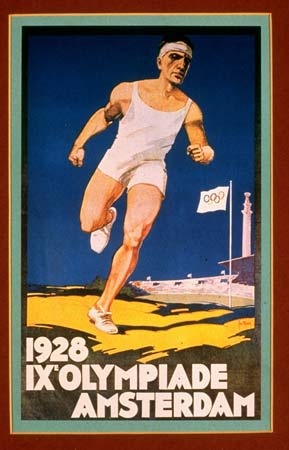 Track-and-field and gymnastics events were added to the women's slate at the 1928 Olympics. There was much criticism of the decision, led by the baron de Coubertin and the Vatican. Women athletes, however, had formed their own track organizations and had held an Olympic-style women's competition in 1922 and 1926. Their performances at these events convinced the International Amateur Athletic Federation (IAAF; later International Association of Athletics Federations) that women were capable of a high level of athletic competition and deserved a place at the Olympics.
Track-and-field and gymnastics events were added to the women's slate at the 1928 Olympics. There was much criticism of the decision, led by the baron de Coubertin and the Vatican. Women athletes, however, had formed their own track organizations and had held an Olympic-style women's competition in 1922 and 1926. Their performances at these events convinced the International Amateur Athletic Federation (IAAF; later International Association of Athletics Federations) that women were capable of a high level of athletic competition and deserved a place at the Olympics.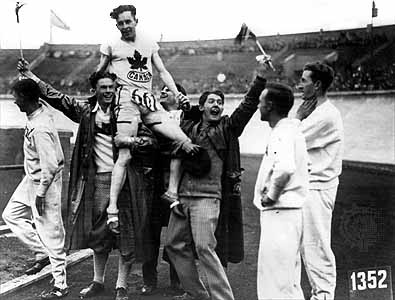 Germany returned to Olympic competition at the 1928 Games, which featured the debut of the Olympic flame. Approximately 3,000 athletes (including nearly 300 women), representing 46 countries, participated in the Olympics. The men's athletics competition was noteworthy for two reasons. It was last Olympic Games for the great Paavo Nurmi (Nurmi, Paavo) and Ville Ritola (Ritola, Ville) of Finland. It was also the poorest performance to date for the U.S. team, which won only three of a possible 12 gold medals in running events. Percy Williams (Williams, Percy) of Canada won both the 100- and 200-metre runs. Controversy arose in the women's 800-metre run when several women collapsed from exhaustion at the end of the race; Olympic officials concluded that the distance was too long for women, and it was not until the 1960 Games in Rome that women were allowed to compete in a race of more than 200 metres.
Germany returned to Olympic competition at the 1928 Games, which featured the debut of the Olympic flame. Approximately 3,000 athletes (including nearly 300 women), representing 46 countries, participated in the Olympics. The men's athletics competition was noteworthy for two reasons. It was last Olympic Games for the great Paavo Nurmi (Nurmi, Paavo) and Ville Ritola (Ritola, Ville) of Finland. It was also the poorest performance to date for the U.S. team, which won only three of a possible 12 gold medals in running events. Percy Williams (Williams, Percy) of Canada won both the 100- and 200-metre runs. Controversy arose in the women's 800-metre run when several women collapsed from exhaustion at the end of the race; Olympic officials concluded that the distance was too long for women, and it was not until the 1960 Games in Rome that women were allowed to compete in a race of more than 200 metres.The Japanese team won the most medals in the swimming competition. Johnny Weissmuller (Weissmuller, Johnny) of the United States concluded his Olympic career with gold medals in the 100-metre freestyle swim and the 800-metre freestyle relay. The Hungarian sabre team won the first of seven consecutive gold medals.
Los Angeles, California, U.S., 1932
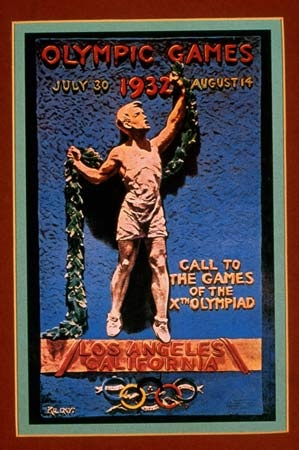 Only about 1,300 athletes, representing 37 countries, competed in the 1932 Games. The poor participation was the result of the worldwide economic depression (Great Depression) and the expense of traveling to California. The Los Angeles Games featured the first Olympic Village, which was located in Baldwin Hills, a suburb of Los Angeles, and covered 321 acres (130 hectares). The male athletes were housed in more than 500 bungalows and had access to a hospital, a library, a post office, and 40 kitchens serving a variety of cuisines. The female athletes stayed at a downtown hotel. The Los Angeles Coliseum was expanded to seat more than 100,000 people, and a new track was installed. Made of crushed peat, the new surface was exceptionally fast, resulting in 10 world records in the running events. Uniform automatic timing and the photo-finish camera were used for the first time at the 1932 Games.
Only about 1,300 athletes, representing 37 countries, competed in the 1932 Games. The poor participation was the result of the worldwide economic depression (Great Depression) and the expense of traveling to California. The Los Angeles Games featured the first Olympic Village, which was located in Baldwin Hills, a suburb of Los Angeles, and covered 321 acres (130 hectares). The male athletes were housed in more than 500 bungalows and had access to a hospital, a library, a post office, and 40 kitchens serving a variety of cuisines. The female athletes stayed at a downtown hotel. The Los Angeles Coliseum was expanded to seat more than 100,000 people, and a new track was installed. Made of crushed peat, the new surface was exceptionally fast, resulting in 10 world records in the running events. Uniform automatic timing and the photo-finish camera were used for the first time at the 1932 Games.The star of the Games was American Babe Didrikson (Zaharias, Babe Didrikson) (later Zaharias). She had won five events at the U.S. Olympic trials, but Olympic rules allowed women to compete in no more than three. Didrikson competed in the 80-metre hurdles, javelin, and high jump, winning two gold medals and a silver. The U.S. team returned to its dominance of the track-and-field events, winning 11 gold medals. American Eddie Tolan (Tolan, Eddie) won the 100- and 200-metre runs. The first race-walking event was held at the Los Angeles Games. See also Sidebar: Stanislawa Walasiewicz: The Curious Story of Stella Walsh.
The Japanese swim team, composed almost entirely of teenagers, won five of the six men's events. Kitamura Kusuo, who won the gold medal in the 1,500-metre freestyle at age 14, became the youngest male swimmer ever to win an Olympic event. American women dominated in swimming, taking four of the five gold medals; Helene Madison (Madison, Helene) won gold medals in the 100- and 400-metre freestyle races and earned a third gold as part of the U.S. relay team.
Berlin, Germany, 1936
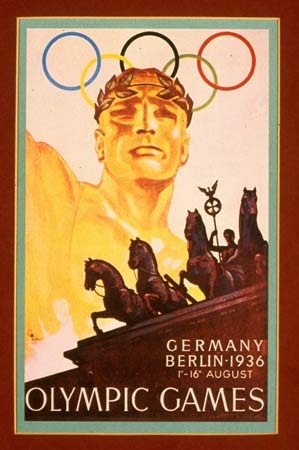
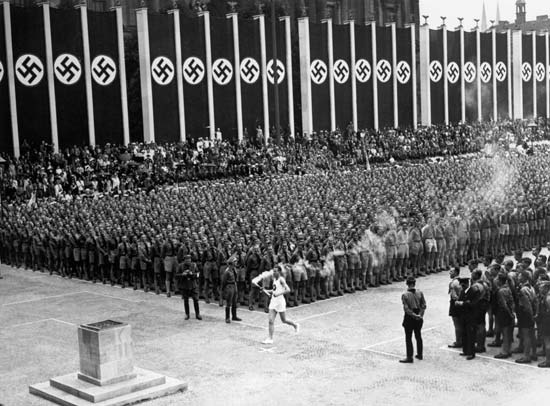 The 1936 Olympics were held in a tense, politically charged atmosphere. The Nazi Party had risen to power in 1933, two years after Berlin was awarded the Games, and its racist policies led to international debate about a boycott of the Games. Fearing a mass boycott, the IOC pressured the German government and received assurances that qualified Jewish athletes would be part of the German team and that the Games would not be used to promote Nazi ideology. Adolf Hitler (Hitler, Adolf)'s government, however, routinely failed to deliver on such promises. Only one athlete of Jewish descent was a member of the German team (see Sidebar: Helene Mayer: Fencing for the Führer); pamphlets and speeches about the natural superiority of the Aryan race were commonplace; and the Reich Sports Field, a newly constructed sports complex that covered 325 acres (131.5 hectares) and included four stadiums, was draped in Nazi banners and symbols. Nonetheless, the attraction of a spirited sports competition was too great, and in the end 49 countries chose to attend the Olympic Games in Berlin.
The 1936 Olympics were held in a tense, politically charged atmosphere. The Nazi Party had risen to power in 1933, two years after Berlin was awarded the Games, and its racist policies led to international debate about a boycott of the Games. Fearing a mass boycott, the IOC pressured the German government and received assurances that qualified Jewish athletes would be part of the German team and that the Games would not be used to promote Nazi ideology. Adolf Hitler (Hitler, Adolf)'s government, however, routinely failed to deliver on such promises. Only one athlete of Jewish descent was a member of the German team (see Sidebar: Helene Mayer: Fencing for the Führer); pamphlets and speeches about the natural superiority of the Aryan race were commonplace; and the Reich Sports Field, a newly constructed sports complex that covered 325 acres (131.5 hectares) and included four stadiums, was draped in Nazi banners and symbols. Nonetheless, the attraction of a spirited sports competition was too great, and in the end 49 countries chose to attend the Olympic Games in Berlin.The Berlin Olympics also featured advancements in media coverage. It was the first Olympic competition to use telex transmissions of results, and zeppelins (zeppelin) were used to quickly transport newsreel footage to other European cities. The Games were televised for the first time, transmitted by closed circuit to specially equipped theatres in Berlin. The 1936 Games also introduced the torch relay by which the Olympic flame is transported from Greece.
Nearly 4,000 athletes competed in 129 events. The track-and-field competition starred American Jesse Owens (Owens, Jesse), who won three individual gold medals and a fourth as a member of the triumphant U.S. 4 × 100-metre relay team. Altogether Owens and his teammates won 12 men's track-and-field gold medals; the success of Owens and the other African American athletes, referred to as “black auxiliaries” by the Nazi press, was considered a particular blow to Hitler's Aryan ideals. See also Sidebar: Sohn Kee-chung: The Defiant One.
However, the Germans did win the most medals overall, dominating the gymnastics, rowing, and equestrian events. Hendrika (“Rie”) Mastenbroek (Mastenbroek, Hendrika) of The Netherlands won three gold medals and a silver in the swimming competition. basketball, an Olympic event for the first time in 1936, was won by the U.S. team. Canoeing also debuted as an Olympic sport.
The 1940 and 1944 Games, scheduled for Helsinki, Finland (originally slated for Tokyo), and London, respectively, were canceled because of World War II.
London, England, 1948
 Despite limited preparation time and after much debate over the need for a sports festival at a time when many countries were still recovering from the destruction of World War II, the 1948 Olympics ultimately were very popular and were perceived as providing relief from the strains caused by the war.
Despite limited preparation time and after much debate over the need for a sports festival at a time when many countries were still recovering from the destruction of World War II, the 1948 Olympics ultimately were very popular and were perceived as providing relief from the strains caused by the war.Germany and Japan, the defeated powers, were not invited to participate. The Soviet Union also did not participate, but the Games were the first to be attended by communist countries, including Hungary, Yugoslavia, and Poland. The London Games lacked the new facilities that had been used in Los Angeles and Berlin, but the British capital's sports facilities had survived the war in good condition and were adequate for Olympic competition. Wembley Stadium hosted the opening ceremonies, the track-and-field competition, and other events. There was no Olympic Village; the male athletes were housed at an army camp in Uxbridge, while the women stayed in dormitories at Southlands College.
 Over 4,000 athletes from 59 countries participated in the Games. Poor weather and a sloppy track slowed the track-and-field competition, in which the fewest Olympic records were set in the history of the Games. The women's competition was expanded to 10 events with the addition of the 200-metre run, the long jump, and the shot put. Fanny Blankers-Koen (Blankers-Koen, Fanny), a 30-year-old mother of two children, won four gold medals for The Netherlands. Emil Zátopek (Zátopek, Emil) of Czechoslovakia won the 10,000-metre run, the first of four gold medals in his career. American Bob Mathias (Mathias, Bob) became the youngest gold medalist in the decathlon, winning the event at age 17.
Over 4,000 athletes from 59 countries participated in the Games. Poor weather and a sloppy track slowed the track-and-field competition, in which the fewest Olympic records were set in the history of the Games. The women's competition was expanded to 10 events with the addition of the 200-metre run, the long jump, and the shot put. Fanny Blankers-Koen (Blankers-Koen, Fanny), a 30-year-old mother of two children, won four gold medals for The Netherlands. Emil Zátopek (Zátopek, Emil) of Czechoslovakia won the 10,000-metre run, the first of four gold medals in his career. American Bob Mathias (Mathias, Bob) became the youngest gold medalist in the decathlon, winning the event at age 17.Americans, led by diver Sammy Lee (Lee, Sammy), won every men's swimming and diving event. Victoria Draves (Draves, Victoria) of the United States earned a gold medal in both platform and springboard diving. The 1948 Olympics featured the debuts of several legendary Olympic performers: László Papp (Papp, László) of Hungary won the first of his three gold medals in boxing, Paul Elvstrøm (Elvstrøm, Paul) of Denmark won the first of his four gold medals in yachting, and Gert Fredriksson (Fredriksson, Gert) of Sweden won the first two of his six gold medals in kayaking.
Helsinki, Finland, 1952
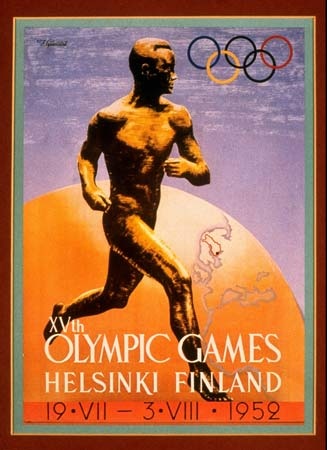 The 1952 Games were the first Olympics in which the Soviet Union (Union of Soviet Socialist Republics) participated (a Russian team had last competed in the 1912 Games), and the international tension caused by the Cold War initially prevailed. Prior to the Games, the U.S. Olympic Committee used the rivalry between East and West to raise funds for the U.S. team. The Soviet Union announced plans to house its athletes in Leningrad and fly into Helsinki each day; these plans were dropped, but a separate Olympic Village for Eastern bloc countries was created in Otaniemi. The Games themselves, however, were friendly, and by the end of the competition Soviet officials had opened their village to all athletes. The Helsinki Games marked the return of German and Japanese teams to Olympic competition. East Germany had applied for participation in the Games but was denied, and the German team consisted of athletes from West Germany only.
The 1952 Games were the first Olympics in which the Soviet Union (Union of Soviet Socialist Republics) participated (a Russian team had last competed in the 1912 Games), and the international tension caused by the Cold War initially prevailed. Prior to the Games, the U.S. Olympic Committee used the rivalry between East and West to raise funds for the U.S. team. The Soviet Union announced plans to house its athletes in Leningrad and fly into Helsinki each day; these plans were dropped, but a separate Olympic Village for Eastern bloc countries was created in Otaniemi. The Games themselves, however, were friendly, and by the end of the competition Soviet officials had opened their village to all athletes. The Helsinki Games marked the return of German and Japanese teams to Olympic competition. East Germany had applied for participation in the Games but was denied, and the German team consisted of athletes from West Germany only.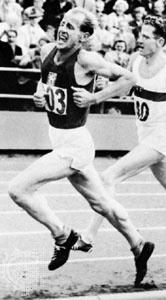 Nearly 5,000 athletes competed, representing 69 countries. The track-and-field competition starred Emil Zátopek (Zátopek, Emil) of Czechoslovakia, who won the gold medal in the 5,000- and 10,000-metre runs. He also won the gold medal in the marathon, in his first attempt ever at that event. The American men, led by pole vaulter Bob Richards (Richards, Bob) and 800-metre specialist Mal Whitfield (Whitfield, Mal), won 14 of the 23 events. The women's track competition featured the sprinting of Marjorie Jackson (Jackson, Marjorie) and the hurdling of Shirley Strickland de la Hunty (Strickland de la Hunty, Shirley), both of Australia. Soviet women, led by Galina Zybina (Zybina, Galina), made a strong showing in the field events.
Nearly 5,000 athletes competed, representing 69 countries. The track-and-field competition starred Emil Zátopek (Zátopek, Emil) of Czechoslovakia, who won the gold medal in the 5,000- and 10,000-metre runs. He also won the gold medal in the marathon, in his first attempt ever at that event. The American men, led by pole vaulter Bob Richards (Richards, Bob) and 800-metre specialist Mal Whitfield (Whitfield, Mal), won 14 of the 23 events. The women's track competition featured the sprinting of Marjorie Jackson (Jackson, Marjorie) and the hurdling of Shirley Strickland de la Hunty (Strickland de la Hunty, Shirley), both of Australia. Soviet women, led by Galina Zybina (Zybina, Galina), made a strong showing in the field events.The 1952 Olympics also saw the debut of the Soviet gymnast Viktor Chukarin (Chukarin, Viktor Ivanovich), who won the first of his two individual gold medals in the combined exercises. American diver Pat McCormick (McCormick, Pat) won two gold medals. Swedish equestrian Henri St. Cyr (Saint Cyr, Henri) won a gold medal in both the individual and team dressage competitions. See also Sidebar: Lis Hartel: Beating Polio.
Melbourne, Australia, 1956
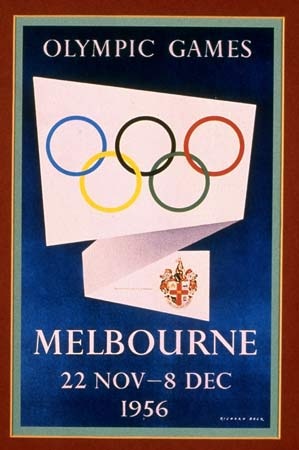 The 1956 Olympics were the first held in the Southern Hemisphere. Because of the reversal of seasons, the Games were celebrated in November and December. The remoteness of Australia and two international crises accounted for the low number of participants; fewer than 3,500 athletes from 67 countries attended the Games. Egypt, Lebanon, and Iraq boycotted in protest of the Israeli invasion of the Sinai Peninsula in October. Moreover, a few weeks before the opening of the Games, the Soviet army entered Budapest, Hungary, and suppressed a popular uprising against the government (see also Sidebar: Hungary v. U.S.S.R.: Blood in the Water); The Netherlands, Spain, and Switzerland boycotted in protest of the Soviet invasion. East and West Germany competed as a single team, a practice that would last through the 1964 Games. Because of Australian quarantine restrictions, the equestrian events were held in Stockholm during June. The Melbourne Games introduced the practice of athletes marching into the closing ceremonies together, not segregated by nation.
The 1956 Olympics were the first held in the Southern Hemisphere. Because of the reversal of seasons, the Games were celebrated in November and December. The remoteness of Australia and two international crises accounted for the low number of participants; fewer than 3,500 athletes from 67 countries attended the Games. Egypt, Lebanon, and Iraq boycotted in protest of the Israeli invasion of the Sinai Peninsula in October. Moreover, a few weeks before the opening of the Games, the Soviet army entered Budapest, Hungary, and suppressed a popular uprising against the government (see also Sidebar: Hungary v. U.S.S.R.: Blood in the Water); The Netherlands, Spain, and Switzerland boycotted in protest of the Soviet invasion. East and West Germany competed as a single team, a practice that would last through the 1964 Games. Because of Australian quarantine restrictions, the equestrian events were held in Stockholm during June. The Melbourne Games introduced the practice of athletes marching into the closing ceremonies together, not segregated by nation.The track-and-field competition was held at the Melbourne Cricket Ground. The U.S. team won 15 of the 24 men's events. Sprinter Bobby Joe Morrow (Morrow, Bobby Joe) earned three gold medals, and Al Oerter (Oerter, Al) won the first of his four consecutive gold medals in the discus. Soviet distance runner Vladimir Kuts (Kuts, Vladimir) won two gold medals. Australian Betty Cuthbert (Cuthbert, Betty) was the star of the women's competition, winning the 100- and 200-metre runs and picking up a third gold medal as a member of the Australian 4 × 100-metre relay team.
Led by Murray Rose (Rose, Murray) and Dawn Fraser (Fraser, Dawn), the Australians won 8 of the 13 swimming events. Swedish modern pentathlete Lars Hall (Hall, Lars-Goran) won his second consecutive gold medal. The 1956 Games featured the first gold medal performances of Soviet gymnast Larisa Latynina (Latynina, Larisa Semyonovna), Soviet weightlifter Arkady Vorobyev (Vorobyev, Arkady), German equestrian Hans Günter Winkler (Winkler, Hans Günter), and Soviet rower Vyacheslav Ivanov (Ivanov, Vyacheslav).
Rome, Italy, 1960
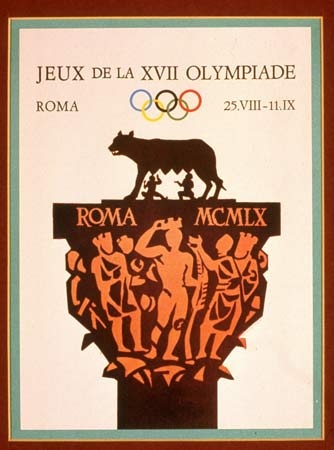 The 1960 Olympics were the first to be fully covered by television. Taped footage of the Games was flown to New York City at the end of each day and broadcast on the CBS television network in the United States. Eurovision provided live television broadcasts throughout Europe. An Olympic Stadium, home to the opening and closing ceremonies and the track-and-field competition, and a Sports Palace were built for the Games, and several ancient sites were restored and used as venues. The Basilica of Maxentius hosted the wrestling competition. The Baths of Caracalla provided the site of the gymnastic events. The marathon was run along the Appian Way and ended under the Arch of Constantine.
The 1960 Olympics were the first to be fully covered by television. Taped footage of the Games was flown to New York City at the end of each day and broadcast on the CBS television network in the United States. Eurovision provided live television broadcasts throughout Europe. An Olympic Stadium, home to the opening and closing ceremonies and the track-and-field competition, and a Sports Palace were built for the Games, and several ancient sites were restored and used as venues. The Basilica of Maxentius hosted the wrestling competition. The Baths of Caracalla provided the site of the gymnastic events. The marathon was run along the Appian Way and ended under the Arch of Constantine.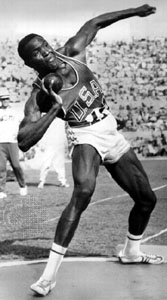 Over 5,000 athletes representing 83 countries participated in the Rome Games. The track-and-field competition starred Abebe Bikila (Bikila, Abebe) of Ethiopia, who, with his victory in the marathon, became the first black African to win an Olympic gold medal. Women's athletics were dominated by American sprinter Wilma Rudolph (Rudolph, Wilma), who won three gold medals. The decathlon featured a tightly contested battle between Rafer Johnson (Johnson, Rafer) of the United States and Yang Chuan-kwang of Taiwan, close friends who both attended the University of California at Los Angeles and trained under the same coach. Although Yang outperformed Johnson in seven events, the American's dominance in the throwing events made the difference, and he outscored Yang by 58 points to win the gold medal. Middle-distance runner Peter Snell (Snell, Peter) of New Zealand won the first of his three career gold medals.
Over 5,000 athletes representing 83 countries participated in the Rome Games. The track-and-field competition starred Abebe Bikila (Bikila, Abebe) of Ethiopia, who, with his victory in the marathon, became the first black African to win an Olympic gold medal. Women's athletics were dominated by American sprinter Wilma Rudolph (Rudolph, Wilma), who won three gold medals. The decathlon featured a tightly contested battle between Rafer Johnson (Johnson, Rafer) of the United States and Yang Chuan-kwang of Taiwan, close friends who both attended the University of California at Los Angeles and trained under the same coach. Although Yang outperformed Johnson in seven events, the American's dominance in the throwing events made the difference, and he outscored Yang by 58 points to win the gold medal. Middle-distance runner Peter Snell (Snell, Peter) of New Zealand won the first of his three career gold medals.The swimming events were dominated by the U.S. and Australian teams, which between them won all but one of the gold medals. Ingrid Krämer of Germany won both of the women's diving events. The U.S. basketball team took its fifth consecutive gold medal; the squad, which starred Oscar Robertson (Robertson, Oscar), Jerry West, Jerry Lucas, and Walt Bellamy, was considered by many at the time to be the best team ever assembled. American Cassius Clay (later known as Muhammad Ali (Ali, Muhammad)) first gained international attention as the light heavyweight boxing champion.
Tokyo, Japan, 1964
 The 1964 Olympics introduced improved timing and scoring technologies, including the first use of computers to keep statistics. After Taiwan and Israel were excluded from the Games of the New Emerging Forces (GANEFO), a competition that had been held in Jakarta, Indonesia, in 1963, the IOC declared that any athlete participating in that sports festival would be ineligible for the Olympics. Indonesia and North Korea then withdrew from the Tokyo Games after a number of their athletes were declared ineligible. Also absent from the 1964 Games was South Africa, which had been banned by the IOC for its racist policy of apartheid. Volleyball and judo were added. (See Sidebar: The Japanese Women's Volleyball Team: The Hardest Part.) The pentathlon (later enlarged to become the heptathlon) and the 400-metre run were added to the slate of women's athletics events.
The 1964 Olympics introduced improved timing and scoring technologies, including the first use of computers to keep statistics. After Taiwan and Israel were excluded from the Games of the New Emerging Forces (GANEFO), a competition that had been held in Jakarta, Indonesia, in 1963, the IOC declared that any athlete participating in that sports festival would be ineligible for the Olympics. Indonesia and North Korea then withdrew from the Tokyo Games after a number of their athletes were declared ineligible. Also absent from the 1964 Games was South Africa, which had been banned by the IOC for its racist policy of apartheid. Volleyball and judo were added. (See Sidebar: The Japanese Women's Volleyball Team: The Hardest Part.) The pentathlon (later enlarged to become the heptathlon) and the 400-metre run were added to the slate of women's athletics events.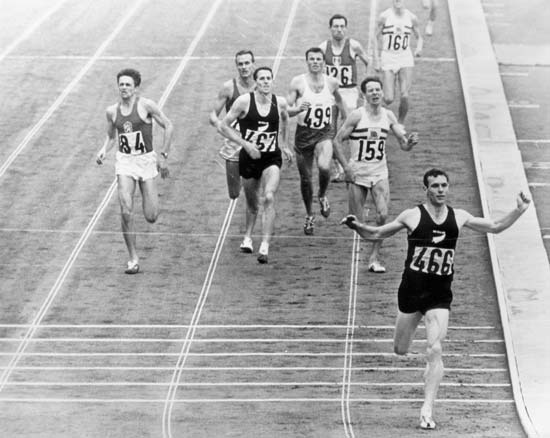 More than 5,000 athletes from 93 countries competed. New Olympic records were set in 27 of the 36 events in the track-and-field competition. The star performer was Peter Snell (Snell, Peter) of New Zealand, who captured the gold medal in both the 800- and 1,500-metre runs. He was the only non-American to win a men's track event. The U.S. team included Bob Hayes (Hayes, Bob), who won the 100 metres, and Billy Mills (Mills, Billy), the surprise winner of the 10,000-metre run. Abebe Bikila (Bikila, Abebe) of Ethiopia won his second marathon. The women's competition featured the Press sisters, Irina (Press, Irina) and Tamara (Press, Tamara), of the Soviet Union. Irina won the gold medal in the pentathlon, Tamara the gold in the shot put and the discus.
More than 5,000 athletes from 93 countries competed. New Olympic records were set in 27 of the 36 events in the track-and-field competition. The star performer was Peter Snell (Snell, Peter) of New Zealand, who captured the gold medal in both the 800- and 1,500-metre runs. He was the only non-American to win a men's track event. The U.S. team included Bob Hayes (Hayes, Bob), who won the 100 metres, and Billy Mills (Mills, Billy), the surprise winner of the 10,000-metre run. Abebe Bikila (Bikila, Abebe) of Ethiopia won his second marathon. The women's competition featured the Press sisters, Irina (Press, Irina) and Tamara (Press, Tamara), of the Soviet Union. Irina won the gold medal in the pentathlon, Tamara the gold in the shot put and the discus.The swimming competition boasted new Olympic records in every event and a dozen world records. Again the Australian and U.S. teams dominated, winning all but one of the events. American Don Schollander (Schollander, Don) won two individual gold medals and two relay golds.
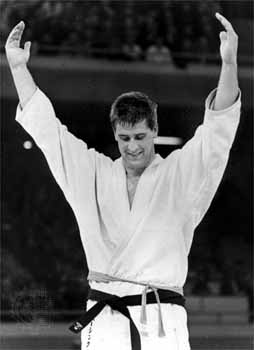 Gymnast Věra ČṂslavská (Čáslavská, Věra) of Czechoslovakia won the first of her two career individual gold medals in the combined exercises. Soviet gymnasts Boris Shakhlin (Shakhlin, Boris Anfiyanovich) and Larisa Latynina (Latynina, Larisa Semyonovna) ended their Olympic careers with gold medal performances. Soviet wrestler Aleksandr Medved (Medved, Aleksandr Vasilyevich) won the first of his three career gold medals. Anton Geesink (Geesink, Anton) of The Netherlands was the surprise champion of the open division of the judo competition.
Gymnast Věra ČṂslavská (Čáslavská, Věra) of Czechoslovakia won the first of her two career individual gold medals in the combined exercises. Soviet gymnasts Boris Shakhlin (Shakhlin, Boris Anfiyanovich) and Larisa Latynina (Latynina, Larisa Semyonovna) ended their Olympic careers with gold medal performances. Soviet wrestler Aleksandr Medved (Medved, Aleksandr Vasilyevich) won the first of his three career gold medals. Anton Geesink (Geesink, Anton) of The Netherlands was the surprise champion of the open division of the judo competition.Mexico City, Mexico, 1968
The 1968 Olympic Games in Mexico City were the most politically charged Olympics since the 1936 Games in Berlin. Ten days before the Games were to open, students protesting the Mexican government's use of funds for the Olympics rather than for social programs were surrounded in the Plaza of Three Cultures by the army and fired upon. More than 200 protesters were killed and over a thousand injured. At the victory ceremony for the men's 200-metre run, Americans Tommie Smith (Smith, Tommie) and John Carlos (gold and bronze medalists, respectively) stood barefoot, each with head bowed and a single black-gloved fist raised during the national anthem. The athletes described the gesture as a tribute to their African American heritage and a protest of the living conditions of minorities in the United States. Officials from the IOC and the U.S. Olympic Committee judged the display to be counter to the ideals of the Games; both athletes were banned from the Olympic Village and sent home. The Games were attended by 112 countries represented by almost 5,500 athletes. East and West Germany competed for the first time as separate countries. Drug testing and female gender verification were conducted for the first time.
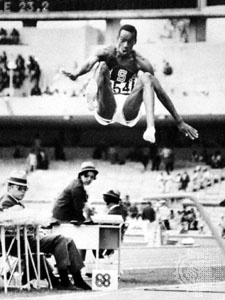 The high elevation of Mexico City (2,300 metres 【7,500 feet】) was both a benefit and a hindrance to track-and-field competitors. The sprinters and field athletes thrived in the thin air. The same was not true for most of the distance runners. African runners, who trained at high elevations, had an advantage; Kip Keino (Keino, Kip) of Kenya did particularly well, earning gold and silver medals. Americans Bob Beamon (Beamon, Bob) (long jump) and Lee Evans (Evans, Lee) (400-metre run) shattered world records, and Dick Fosbury (Fosbury, Dick) won the high jump with his revolutionary “Fosbury flop” technique.
The high elevation of Mexico City (2,300 metres 【7,500 feet】) was both a benefit and a hindrance to track-and-field competitors. The sprinters and field athletes thrived in the thin air. The same was not true for most of the distance runners. African runners, who trained at high elevations, had an advantage; Kip Keino (Keino, Kip) of Kenya did particularly well, earning gold and silver medals. Americans Bob Beamon (Beamon, Bob) (long jump) and Lee Evans (Evans, Lee) (400-metre run) shattered world records, and Dick Fosbury (Fosbury, Dick) won the high jump with his revolutionary “Fosbury flop” technique.The pool events starred Debbie Meyer (Meyer, Debbie) of the United States, who won three gold medals in freestyle races, and Klaus Dibiasi (Dibiasi, Klaus) of Italy, who won the first of his three career gold medals in platform diving. Soviet light middleweight boxer Boris Lagutin (Lagutin, Boris Nikolayevich) won his second gold medal, and gymnast Katō Sawao of Japan won the first of his two individual gold medals in the combined exercises.
Munich, West Germany, 1972
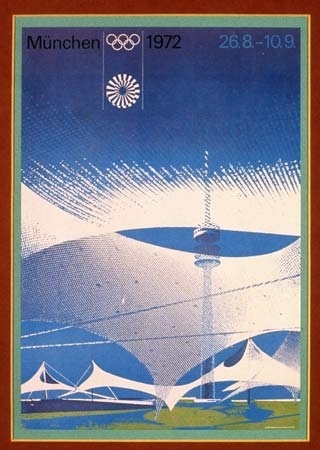 Tragedy struck the 1972 Olympics in Munich when eight Palestinian terrorists (terrorism) invaded the Olympic Village on September 5 and killed two members of the Israeli team. Nine other Israelis were held hostage as the terrorists bargained for the release of 200 Palestinian prisoners in Israel. All the hostages, five of their captors, and a West German policeman were slain in a failed rescue attempt. The tragedy brought the Games to a halt and cast a long shadow over what had been theretofore a memorably joyful Games. All competition was suspended for a day while a memorial service for the victims was conducted at the Olympic Stadium. IOC president Avery Brundage (Brundage, Avery)'s decision to continue the Games after the attack was widely criticized. In subsequent Olympics, increased security measures in the Olympic Villages and competition venues protected athletes but also diminished the festive and open atmosphere that is at the heart of Olympism.
Tragedy struck the 1972 Olympics in Munich when eight Palestinian terrorists (terrorism) invaded the Olympic Village on September 5 and killed two members of the Israeli team. Nine other Israelis were held hostage as the terrorists bargained for the release of 200 Palestinian prisoners in Israel. All the hostages, five of their captors, and a West German policeman were slain in a failed rescue attempt. The tragedy brought the Games to a halt and cast a long shadow over what had been theretofore a memorably joyful Games. All competition was suspended for a day while a memorial service for the victims was conducted at the Olympic Stadium. IOC president Avery Brundage (Brundage, Avery)'s decision to continue the Games after the attack was widely criticized. In subsequent Olympics, increased security measures in the Olympic Villages and competition venues protected athletes but also diminished the festive and open atmosphere that is at the heart of Olympism.More than 7,000 athletes from 122 countries participated. The track-and-field competition was marred by protests over equipment, scheduling problems, and incidents on the track. Soviet sprinter Valery Borzov (Borzov, Valery) won both the 100- and 200-metre runs when two of his chief competitors, using a schedule with out-of-date starting times, missed their heats. Lasse Virén (Virén, Lasse) of Finland captured the gold medal in the 5,000- and 10,000-metre runs.
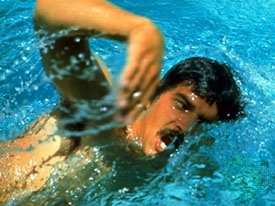 The swimming competition starred American Mark Spitz (Spitz, Mark), who won seven gold medals (three in relays), the most by any athlete in one Olympics to that time. Shane Gould (Gould, Shane) of Australia won three gold medals, a silver, and a bronze in the women's swimming events.
The swimming competition starred American Mark Spitz (Spitz, Mark), who won seven gold medals (three in relays), the most by any athlete in one Olympics to that time. Shane Gould (Gould, Shane) of Australia won three gold medals, a silver, and a bronze in the women's swimming events.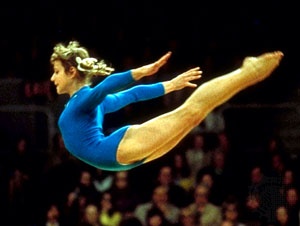 Archery returned to the Games for the first time since 1920, with events for both men and women. Soviet gymnast Olga Korbut (Korbut, Olga Valentinovna) and weightlifter Vasily Alekseyev (Alekseyev, Vasily Ivanovich) made their Olympic debuts in 1972. Teófilo Stevenson (Stevenson, Teófilo) of Cuba won the first of his three boxing gold medals in the heavyweight division.
Archery returned to the Games for the first time since 1920, with events for both men and women. Soviet gymnast Olga Korbut (Korbut, Olga Valentinovna) and weightlifter Vasily Alekseyev (Alekseyev, Vasily Ivanovich) made their Olympic debuts in 1972. Teófilo Stevenson (Stevenson, Teófilo) of Cuba won the first of his three boxing gold medals in the heavyweight division.The Soviet Union captured the gold medal in men's basketball, upsetting the United States, which until then had never lost a game in Olympic competition. The victory was wrapped in controversy after game officials extended the contest by three seconds, allowing the Soviets the opportunity to score a final basket and win 51–50. The U.S. team, believing that the final result was unfair, did not attend the victory ceremony, refused their silver medals, and filed an official protest to no avail.
Montreal, Canada, 1976
Despite producing 32 world records and a host of memorable performances, the 1976 Games drew more attention to the apparent problems of the Olympic movement. Twenty-six countries, mostly from Africa, chose to boycott the Games when the IOC denied their request to ban New Zealand, whose national rugby team had recently toured South Africa. Taiwan also boycotted, when Canada, which officially recognized the People's Republic of China, would not permit Taiwan to be identified at the Games as the Republic of China. Questions arose about the integrity of the competition itself. Many athletes—particularly the East German women swimmers—were suspected of using anabolic steroids (anabolic steroid) to enhance their performance. There was also concern that the amateur spirit of the Games had been undermined by the growing commercial influence on sports in the West and the pervasive government control of athletes in the Eastern bloc countries. The Montreal Games were a financial disaster, placing a burden of debt on the people of Canada and Quebec that lasted for decades.
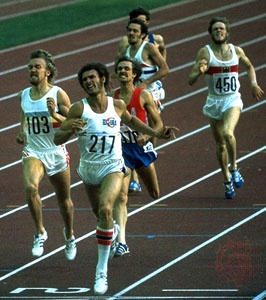 More than 6,000 athletes competed, representing 92 countries. There were three double gold medal performances in the track-and-field competition: distance runner Lasse Virén (Virén, Lasse) of Finland repeated his 1972 double of the 5,000- and 10,000-metre events; Cuban Alberto Juantorena (Juantorena, Alberto) won the 400- and 800-metre runs; and Soviet runner Tatyana Kazankina (Kazankina, Tatyana) earned gold medals in the 800- and 1,500-metre runs. East German Waldemar Cierpinski (Cierpinski, Waldemar) won the first of his consecutive Olympic marathon gold medals. Legendary hurdler Edwin Moses (Moses, Edwin) of the United States earned his first gold medal.
More than 6,000 athletes competed, representing 92 countries. There were three double gold medal performances in the track-and-field competition: distance runner Lasse Virén (Virén, Lasse) of Finland repeated his 1972 double of the 5,000- and 10,000-metre events; Cuban Alberto Juantorena (Juantorena, Alberto) won the 400- and 800-metre runs; and Soviet runner Tatyana Kazankina (Kazankina, Tatyana) earned gold medals in the 800- and 1,500-metre runs. East German Waldemar Cierpinski (Cierpinski, Waldemar) won the first of his consecutive Olympic marathon gold medals. Legendary hurdler Edwin Moses (Moses, Edwin) of the United States earned his first gold medal.The swimming was dominated by the American men and the East German women. The American men, led by John Naber (Naber, John) (who took four gold medals), won all but one event and set 11 world records. Kornelia Ender (Ender, Kornelia), winner of four gold medals, led the East German team as it took 10 of the 11 individual events and set eight world records.
 Nadia Comăneci (Comăneci, Nadia) of Romania won three gold medals and scored a perfect score of 10 seven times in gymnastics. Women competed in basketball and rowing for the first time. Pertti Karppinen (Karppinen, Pertti) of Finland won the first of his three career gold medals in rowing. The U.S. boxing team, starring Leon (Spinks, Leon) and Michael Spinks (Spinks, Michael) and Ray (“Sugar Ray”) Leonard (Leonard, Sugar Ray), won 5 of the 11 divisions.
Nadia Comăneci (Comăneci, Nadia) of Romania won three gold medals and scored a perfect score of 10 seven times in gymnastics. Women competed in basketball and rowing for the first time. Pertti Karppinen (Karppinen, Pertti) of Finland won the first of his three career gold medals in rowing. The U.S. boxing team, starring Leon (Spinks, Leon) and Michael Spinks (Spinks, Michael) and Ray (“Sugar Ray”) Leonard (Leonard, Sugar Ray), won 5 of the 11 divisions.Moscow, U.S.S.R., 1980
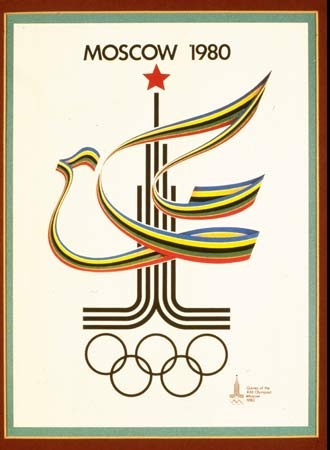 The Soviet invasion of Afghanistan in December 1979 led to the largest boycott in the history of the Olympic movement. U.S. President Jimmy Carter took the lead in the call for a boycott of the 1980 Olympics, and approximately 60 other countries joined the United States in staying away from Moscow. A number of Western countries did not observe the boycott, notably Great Britain, France, Italy, and Sweden. In all, about 5,000 athletes representing 81 countries did attend the Games. Protests against the Soviet presence in Afghanistan continued, however. Several of the participating countries refused to attend the opening ceremony, and the Olympic hymn was played at several medal ceremonies, rather than the appropriate national anthem. The Games were also hurt by rowdy behaviour from spectators, cheating by officials, and security so intrusive that winners in track events were physically prevented from taking victory laps.
The Soviet invasion of Afghanistan in December 1979 led to the largest boycott in the history of the Olympic movement. U.S. President Jimmy Carter took the lead in the call for a boycott of the 1980 Olympics, and approximately 60 other countries joined the United States in staying away from Moscow. A number of Western countries did not observe the boycott, notably Great Britain, France, Italy, and Sweden. In all, about 5,000 athletes representing 81 countries did attend the Games. Protests against the Soviet presence in Afghanistan continued, however. Several of the participating countries refused to attend the opening ceremony, and the Olympic hymn was played at several medal ceremonies, rather than the appropriate national anthem. The Games were also hurt by rowdy behaviour from spectators, cheating by officials, and security so intrusive that winners in track events were physically prevented from taking victory laps.The level of competition clearly suffered from the boycott. The Soviet team won 80 gold medals and 195 medals in all in the most lopsided final tally since the U.S. domination of the 1904 Games. The track-and-field competition produced several disappointing winning times. The 800- and 1,500-metre runs boasted the world's two best performers, Steve Ovett (Ovett, Steve) and Sebastian Coe (Coe, Sebastian), both of Great Britain. Although Ovett won the 800-metre run and Coe the 1,500-metre, both races were characterized by overly cautious running and unimpressive times. The 5,000- and 10,000-metre runs were won by Miruts Yifter of Ethiopia. See Sidebar: Miruts Yifter: Yifter the Shifter.
The East German women dominated the swimming as they had in 1976, capturing 11 of the 13 gold medals. The Soviet men, led by Vladimir Salnikov (Salnikov, Vladimir), won seven events.
Los Angeles, California, U.S., 1984
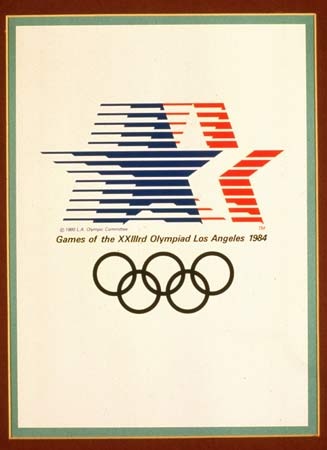
 Many communist countries, including the Soviet Union, East Germany, and Cuba, retaliated for the U.S.-led boycott of the 1980 Games by staying away from the 1984 Games, citing concerns over the safety of their athletes in what they considered a hostile and fiercely anticommunist environment. China, however, participated in the Summer Games for the first time since 1952. In all, nearly 6,800 athletes representing 140 countries came to Los Angeles. The number of events for women grew to include cycling, rhythmic gymnastics, synchronized swimming, and several new track-and-field events, most notably the marathon. Under the direction of the American entrepreneur Peter Ueberroth, the 1984 Olympics witnessed the ascension of commercialism as an integral element in the staging of the Games. Corporate sponsors, principally U.S.-based multinationals, were allowed to put Olympic symbols on their products, which were then marketed as the “official” such product of the Olympics. A spot on the torch relay team sold for $3,000 per kilometre. The Olympics turned a profit ($225,000,000) for the first time since 1932. Despite concerns about growing corporate involvement and the reduced competition caused by the communist boycott, the financial success and high worldwide television ratings raised optimism about the Olympic movement for the first time in a generation.
Many communist countries, including the Soviet Union, East Germany, and Cuba, retaliated for the U.S.-led boycott of the 1980 Games by staying away from the 1984 Games, citing concerns over the safety of their athletes in what they considered a hostile and fiercely anticommunist environment. China, however, participated in the Summer Games for the first time since 1952. In all, nearly 6,800 athletes representing 140 countries came to Los Angeles. The number of events for women grew to include cycling, rhythmic gymnastics, synchronized swimming, and several new track-and-field events, most notably the marathon. Under the direction of the American entrepreneur Peter Ueberroth, the 1984 Olympics witnessed the ascension of commercialism as an integral element in the staging of the Games. Corporate sponsors, principally U.S.-based multinationals, were allowed to put Olympic symbols on their products, which were then marketed as the “official” such product of the Olympics. A spot on the torch relay team sold for $3,000 per kilometre. The Olympics turned a profit ($225,000,000) for the first time since 1932. Despite concerns about growing corporate involvement and the reduced competition caused by the communist boycott, the financial success and high worldwide television ratings raised optimism about the Olympic movement for the first time in a generation.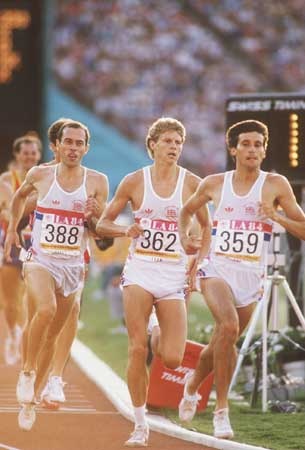 As in 1980, the boycott resulted in empty lanes and canceled heats on the track and an unbalanced distribution of medals. At the 1984 Games the U.S. team benefited most, capturing 83 gold medals and 174 medals altogether. The track-and-field competition returned to the Memorial Coliseum, which had been renovated for the Games. American Carl Lewis (Lewis, Carl), competing in the same events Jesse Owens (Owens, Jesse) had won in 1936, won four gold medals. Sebastian Coe (Coe, Sebastian) and Daley Thompson (Thompson, Daley) of the United Kingdom each repeated their gold medal performances of 1980, winning the 1,500-metre run and the decathlon, respectively. See also Sidebar: Zola Budd: Collision and Controversy.
As in 1980, the boycott resulted in empty lanes and canceled heats on the track and an unbalanced distribution of medals. At the 1984 Games the U.S. team benefited most, capturing 83 gold medals and 174 medals altogether. The track-and-field competition returned to the Memorial Coliseum, which had been renovated for the Games. American Carl Lewis (Lewis, Carl), competing in the same events Jesse Owens (Owens, Jesse) had won in 1936, won four gold medals. Sebastian Coe (Coe, Sebastian) and Daley Thompson (Thompson, Daley) of the United Kingdom each repeated their gold medal performances of 1980, winning the 1,500-metre run and the decathlon, respectively. See also Sidebar: Zola Budd: Collision and Controversy.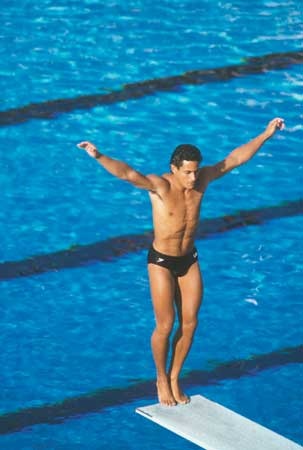 The U.S. women's team won 11 of the 14 swimming events. Mary T. Meagher and Tracy Caulkins (Caulkins, Tracy) each earned three gold medals. American Greg Louganis (Louganis, Greg) swept the diving events. With the powerful eastern European teams absent, the U.S. men's and women's gymnastic teams had their best Olympic showing ever; Mary Lou Retton (Retton, Mary Lou) became the first American woman to capture the individual gold medal in the combined exercises. In boxing, without the challenge of the Cubans, the U.S. team dominated the competition, earning nine gold medals.
The U.S. women's team won 11 of the 14 swimming events. Mary T. Meagher and Tracy Caulkins (Caulkins, Tracy) each earned three gold medals. American Greg Louganis (Louganis, Greg) swept the diving events. With the powerful eastern European teams absent, the U.S. men's and women's gymnastic teams had their best Olympic showing ever; Mary Lou Retton (Retton, Mary Lou) became the first American woman to capture the individual gold medal in the combined exercises. In boxing, without the challenge of the Cubans, the U.S. team dominated the competition, earning nine gold medals.Seoul, South Korea, 1988
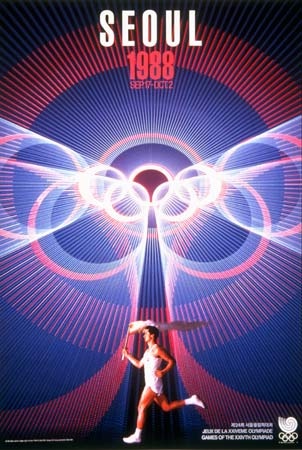
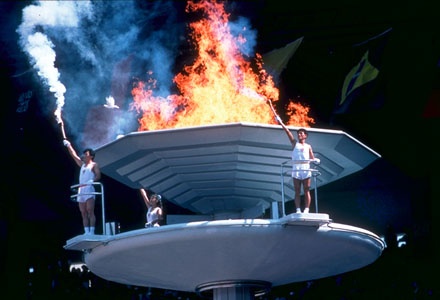 Political problems threatened to return to centre stage at the 1988 Games. Violent student riots took place in Seoul in the months leading up to the Games. North Korea, still technically at war with South Korea, complained bitterly that it should have cohost status. The IOC made some concessions to North Korea, but North Korea did not find them satisfactory and boycotted; several other countries, notably Cuba and Ethiopia, stayed away from Seoul in solidarity with North Korea. The boycott did not have the effect of previous ones, and the Seoul Games proved to be extremely competitive. Nearly 8,500 athletes from 159 countries participated. The Olympic rule requiring participants to be amateurs was overturned in 1986, and decisions on professional participation were left to the governing bodies of particular sports. This resulted in the return of tennis, which had been dropped in 1924, to the Games. Table tennis and team archery events were also added. Canadian Ben Johnson, champion of the 100-metre run, and several weightlifters tested positive for steroid use and were disqualified. In all, 10 athletes were banned from the Games for using performance-enhancing drugs.
Political problems threatened to return to centre stage at the 1988 Games. Violent student riots took place in Seoul in the months leading up to the Games. North Korea, still technically at war with South Korea, complained bitterly that it should have cohost status. The IOC made some concessions to North Korea, but North Korea did not find them satisfactory and boycotted; several other countries, notably Cuba and Ethiopia, stayed away from Seoul in solidarity with North Korea. The boycott did not have the effect of previous ones, and the Seoul Games proved to be extremely competitive. Nearly 8,500 athletes from 159 countries participated. The Olympic rule requiring participants to be amateurs was overturned in 1986, and decisions on professional participation were left to the governing bodies of particular sports. This resulted in the return of tennis, which had been dropped in 1924, to the Games. Table tennis and team archery events were also added. Canadian Ben Johnson, champion of the 100-metre run, and several weightlifters tested positive for steroid use and were disqualified. In all, 10 athletes were banned from the Games for using performance-enhancing drugs. In the track events the Kenyan men's team won four of the six distance races. Soviet pole-vaulter Sergey Bubka (Bubka, Sergey) won his first gold medal. The women's competition featured Americans Florence Griffith Joyner (Griffith Joyner, Florence), winner of three gold medals, and Jackie Joyner-Kersee (Joyner-Kersee, Jackie), who earned gold medals in the heptathlon and the long jump.
In the track events the Kenyan men's team won four of the six distance races. Soviet pole-vaulter Sergey Bubka (Bubka, Sergey) won his first gold medal. The women's competition featured Americans Florence Griffith Joyner (Griffith Joyner, Florence), winner of three gold medals, and Jackie Joyner-Kersee (Joyner-Kersee, Jackie), who earned gold medals in the heptathlon and the long jump.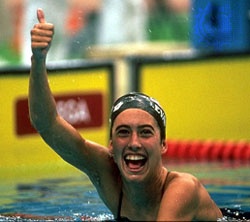 Kristin Otto (Otto, Kristin) of East Germany won six gold medals in swimming. American swimmer Janet Evans (Evans, Janet) won three events. The men's diving competition was again swept by Greg Louganis (Louganis, Greg) of the United States.
Kristin Otto (Otto, Kristin) of East Germany won six gold medals in swimming. American swimmer Janet Evans (Evans, Janet) won three events. The men's diving competition was again swept by Greg Louganis (Louganis, Greg) of the United States.Weightlifter Naim Suleymanoglu (Suleymanoglu, Naim) of Turkey won the first of his two career gold medals in the featherweight division. Soviet Greco-Roman wrestler Aleksandr Kareline (Kareline, Aleksandr), competing in the super heavyweight division, also won his first gold medal.
Barcelona, Spain, 1992
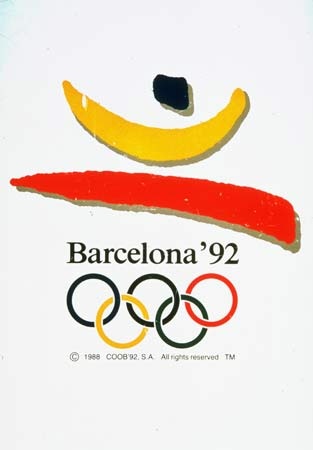 The 1992 Games were perhaps the most successful modern Olympics. More than 9,300 athletes representing 169 countries participated. For the first time in three decades, there was no boycott. The dramatic political changes that had swept across eastern Europe had a tremendous effect on the Olympics. Latvia, Lithuania, Estonia, and Croatia competed as independent countries. With the fall of the Berlin Wall in 1989, the German team was again united. Although the truncated nation of Yugoslavia was banned, athletes from Serbia and Montenegro were allowed to compete as individuals. Athletes from the former Soviet republics competed for the last time as a team. Known as the Unified Team, its members were saluted with their individual national anthems and flags at medal ceremonies. South Africa, which had abandoned its policy of apartheid, returned to the Olympics with its first racially integrated team.
The 1992 Games were perhaps the most successful modern Olympics. More than 9,300 athletes representing 169 countries participated. For the first time in three decades, there was no boycott. The dramatic political changes that had swept across eastern Europe had a tremendous effect on the Olympics. Latvia, Lithuania, Estonia, and Croatia competed as independent countries. With the fall of the Berlin Wall in 1989, the German team was again united. Although the truncated nation of Yugoslavia was banned, athletes from Serbia and Montenegro were allowed to compete as individuals. Athletes from the former Soviet republics competed for the last time as a team. Known as the Unified Team, its members were saluted with their individual national anthems and flags at medal ceremonies. South Africa, which had abandoned its policy of apartheid, returned to the Olympics with its first racially integrated team.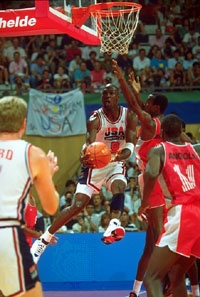 The list of sports expanded to include badminton, baseball, and women's judo. The Barcelona Games were characterized by an increasing presence of professional athletes in Olympic competition. Most conspicuous was the U.S. men's basketball team, called the “Dream Team.” The team, which crushed each of its opponents to win the gold medal easily, featured 11 stars of the National Basketball Association, including Michael Jordan (Jordan, Michael), Scottie Pippen, Earvin (“Magic”) Johnson (Johnson, Magic), and Larry Bird (Bird, Larry). Despite the infusion of professionalism, the distribution of medals among countries remained largely the same if not slightly more balanced.
The list of sports expanded to include badminton, baseball, and women's judo. The Barcelona Games were characterized by an increasing presence of professional athletes in Olympic competition. Most conspicuous was the U.S. men's basketball team, called the “Dream Team.” The team, which crushed each of its opponents to win the gold medal easily, featured 11 stars of the National Basketball Association, including Michael Jordan (Jordan, Michael), Scottie Pippen, Earvin (“Magic”) Johnson (Johnson, Magic), and Larry Bird (Bird, Larry). Despite the infusion of professionalism, the distribution of medals among countries remained largely the same if not slightly more balanced.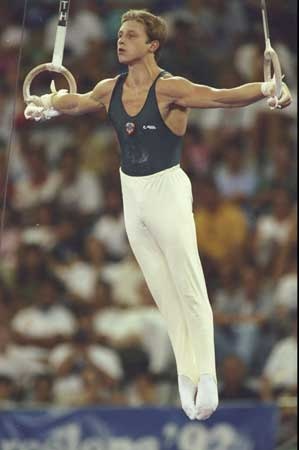 Belarusian gymnast Vitaly Sherbo (Sherbo, Vitaly) gave the Games' most impressive performance, winning five of the seven individual events. Krisztina Egerszegi (Egerszegi, Krisztina) of Hungary won three gold medals in the swimming competition. The Cuban boxing team captured 7 of the 12 titles. See also Sidebar: Hassiba Boulmerka: Testing Her Faith.
Belarusian gymnast Vitaly Sherbo (Sherbo, Vitaly) gave the Games' most impressive performance, winning five of the seven individual events. Krisztina Egerszegi (Egerszegi, Krisztina) of Hungary won three gold medals in the swimming competition. The Cuban boxing team captured 7 of the 12 titles. See also Sidebar: Hassiba Boulmerka: Testing Her Faith. Atlanta, Georgia, U.S., 1996
Selected over Athens, Greece, to host the Centennial Summer Games, Atlanta staged one of the most extravagant Games in Olympic history. With a five-hour opening ceremony and the creation of a “country fair” atmosphere complete with booths, amusement park rides, and concerts, the 1996 Olympics cost nearly $1.7 billion. For the first time, the Games received no governmental financial support. Instead, corporate sponsors—including Coca-Cola, which supplied over $300 million—and television rights were relied upon to defray costs. The result, many claimed, was excessive commercialization, and few believed that a privately funded Games would be held in the future. The Games also experienced transportation and accommodation problems, and, though extra security precautions were taken, a pipe bomb explosion in Centennial Olympic Park caused one death. The perpetrator, American Eric Rudolph, also later bombed a gay night club in 1997 and an abortion clinic in 1998. He was sentenced to multiple terms of life imprisonment in 2005.
For the first time, all national Olympic committees (NOCs) invited to compete sent athletes, including each of the former Soviet republics, Burundi, North Korea, the Palestinian Authority, and Hong Kong, which won its first (and last) gold medal before its reunification with China (1997). A record 197 NOCs sent more than 10,000 contestants. The number of events reached 271 as women's football (soccer), beach volleyball, lightweight rowing, women's softball, and mountain biking (cross-country cycling) made their debuts.
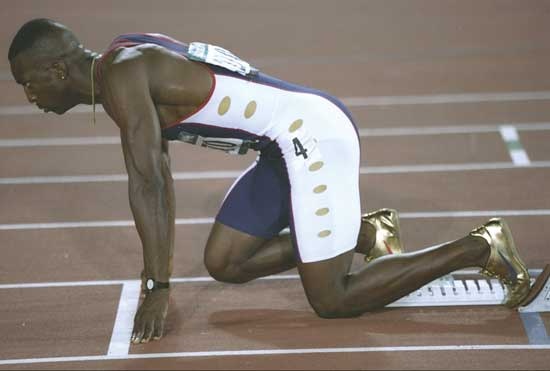 Standouts at the Atlanta Games included Carl Lewis (Lewis, Carl) (U.S.), who won his ninth gold medal in track and field, and Fu Mingxia (China), who won the women's platform and springboard diving events. The 200-metre and 400-metre sprints were swept in the men's and women's competitions by Michael Johnson (Johnson, Michael) (U.S.) and Marie-José Pérec (Pérec, Marie-José) (France), respectively; Svetlana Masterkova (Russia) won the 800- and 1,500-metre titles.
Standouts at the Atlanta Games included Carl Lewis (Lewis, Carl) (U.S.), who won his ninth gold medal in track and field, and Fu Mingxia (China), who won the women's platform and springboard diving events. The 200-metre and 400-metre sprints were swept in the men's and women's competitions by Michael Johnson (Johnson, Michael) (U.S.) and Marie-José Pérec (Pérec, Marie-José) (France), respectively; Svetlana Masterkova (Russia) won the 800- and 1,500-metre titles.Women's swimming was dominated by Michelle Smith (Ireland). Her three gold medals, however, came amid rumours of drug use. In the men's events three swimmers each captured two individual gold medals: Aleksandr Popov (Popov, Aleksandr) (Russia), Danyon Loader (New Zealand), and Denis Pankratov (Russia). In women's gymnastics the team event was won by the surprising U.S. squad, while the individual contests were dominated by Lilia Podkopayeva (Ukraine), who won two gold medals and one silver, including the title in the all-around. Aleksey Nemov (Russia) was the standout in the men's gymnastics competition. His six medals, including two gold, were the most won at the 1996 Games.
Sydney, Australia, 2000
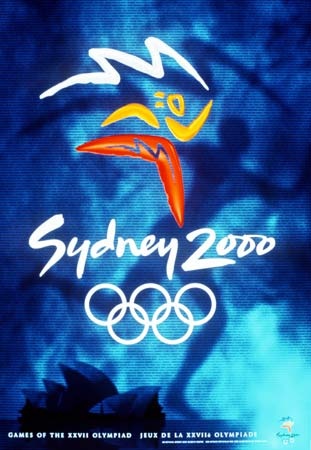
 Sydney was narrowly chosen over Beijing as host city of the 2000 Olympics. The IOC was attracted to the city's long history of enthusiasm for sports, its promise to use recovered toxic wastelands as sites for sporting venues, and its plan to involve the smaller countries of Oceania in hosting activities. Despite some cost overruns and a ticket scandal, the preparations and the Games themselves went smoothly. The opening ceremonies celebrated the history of Australia, especially the unique culture and contributions of the Aborigines (Australian Aborigine), the indigenous people of the continent. The high point of the opening ceremonies came when Aborigine runner Cathy Freeman lit the Olympic flame. She later won the gold medal in the 400-metre event. The accomplishments and recognition of Freeman were an important milestone for Australian Aborigines, who were still struggling for their place in Australian society (see Sidebar: Cathy Freeman: The Heart of a Nation).
Sydney was narrowly chosen over Beijing as host city of the 2000 Olympics. The IOC was attracted to the city's long history of enthusiasm for sports, its promise to use recovered toxic wastelands as sites for sporting venues, and its plan to involve the smaller countries of Oceania in hosting activities. Despite some cost overruns and a ticket scandal, the preparations and the Games themselves went smoothly. The opening ceremonies celebrated the history of Australia, especially the unique culture and contributions of the Aborigines (Australian Aborigine), the indigenous people of the continent. The high point of the opening ceremonies came when Aborigine runner Cathy Freeman lit the Olympic flame. She later won the gold medal in the 400-metre event. The accomplishments and recognition of Freeman were an important milestone for Australian Aborigines, who were still struggling for their place in Australian society (see Sidebar: Cathy Freeman: The Heart of a Nation).Nearly 11,000 athletes representing 199 IOC member countries (including three athletes from the United Nations dependency of East Timor) participated in the Games, which featured a record 928 medals awarded in 300 events. Several events were contested at the Olympics for the first time in 2000, including men's and women's tae kwon do, trampoline, triathlon, and synchronized diving. Other new women's events included weightlifting, modern pentathlon, and pole vault. The track-and-field competition starred American sprinter Marion Jones (Jones, Marion), who won three gold medals and two bronze. Australian swimmer Ian Thorpe (Thorpe, Ian), nicknamed the “Thorpedo,” collected three gold medals and a silver, and Dutch swimmers Pieter van den Hoogeband and Inge de Bruijn each won two gold medals. British rower Steven Redgrave (Redgrave, Sir Steven) won his fifth consecutive gold medal, an unmatched feat in his sport. Heavyweight boxer Felix Savon (Savón, Felix) of Cuba equaled the feat of his countryman Teófilo Stevenson (Stevenson, Teófilo) by winning his third consecutive gold medal.
Athens, Greece, 2004
The 2004 Olympic Games returned home to Greece, birthplace of the ancient Games and site of the inaugural modern Olympics. The excitement surrounding the homecoming was tempered by security concerns related to Athens's proximity to the politically volatile Middle East. Moreover, serious construction delays and worries that Athens's hot, humid weather and high levels of air pollution would be detrimental to the athletes prompted the IOC to briefly consider moving the Games to another city. The media seized on these matters and predicted dismal failure. None of the expected calamities occurred. By opening day the city had been splendidly rebuilt. All venues and facilities were ready, exceptionally modern transportation systems functioned well, and security was the best ever. The heat did affect some competitors, and spectator attendance was poor for some of the earlier events (partly as a result of unfavourable press). More than 20 athletes were disqualified after failing tests for performance-enhancing-drug use, and controversies over scoring in gymnastics and fencing made headlines. Nevertheless, most of the 17-day event went smoothly, and the 35 competition venues were deemed excellent. The world press raved about the success of the Games as it apologized to Greece for its dire but groundless predictions. IOC president Jacques Rogge declared the Athens Olympics “unforgettable, dream Games.”
 In 2004 a record 201 national Olympic committees were represented. Nearly 11,100 athletes competed in 37 disciplines in 28 sports; women participated in freestyle wrestling and sabre fencing for the first time. American swimming phenomenon Michael Phelps (Phelps, Michael) topped the medals table with a record-tying eight (six gold and two bronze). On the track, Kelly Holmes of Great Britain and Ethiopia's Hicham El Guerrouj (El Guerrouj, Hicham) were double gold medalists, and hurdler Liu Xiang won China's first gold medal in men's athletics. The concluding event, the men's marathon, was won by Stefano Baldini of Italy after the leader, Brazil's Vanderlei Lima, was assaulted by a deranged spectator about 4 miles (6.4 km) from the finish line. Lima, who recovered to take the bronze, was awarded the Pierre de Coubertin medal for “his exceptional demonstration of fair play and Olympic values.”
In 2004 a record 201 national Olympic committees were represented. Nearly 11,100 athletes competed in 37 disciplines in 28 sports; women participated in freestyle wrestling and sabre fencing for the first time. American swimming phenomenon Michael Phelps (Phelps, Michael) topped the medals table with a record-tying eight (six gold and two bronze). On the track, Kelly Holmes of Great Britain and Ethiopia's Hicham El Guerrouj (El Guerrouj, Hicham) were double gold medalists, and hurdler Liu Xiang won China's first gold medal in men's athletics. The concluding event, the men's marathon, was won by Stefano Baldini of Italy after the leader, Brazil's Vanderlei Lima, was assaulted by a deranged spectator about 4 miles (6.4 km) from the finish line. Lima, who recovered to take the bronze, was awarded the Pierre de Coubertin medal for “his exceptional demonstration of fair play and Olympic values.”The 2008 Games were scheduled to be held in Beijing and those of 2012 in London.
Beijing, China, 2008
For coverage of the 2008 Olympics, see Beijing 2008 Olympic Games: Mount Olympus Meets the Middle Kingdom.
History of the Olympic Winter Games
Although some skating events were included in the 1908 and 1920 Games, it was not until 1924 that the Winter Games were accepted as a celebration comparable to the Summer Games and given the official blessing of the International Olympic Committee (IOC).
Chamonix, France, 1924
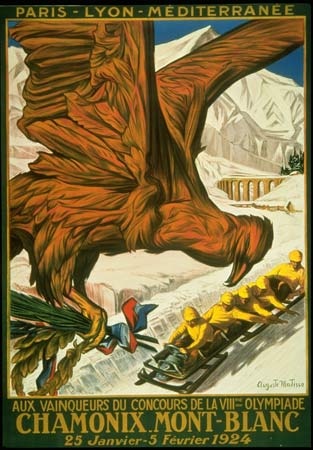 The Chamonix Games were originally staged as International Winter Sports Week, a meet sponsored by the IOC but not sanctioned as an official Olympic Games. Well-organized and equipped with new facilities, the event was a success and led the IOC to amend its charter in 1925, establishing the Winter Games. Chamonix was thereafter recognized as the first Winter Olympics.
The Chamonix Games were originally staged as International Winter Sports Week, a meet sponsored by the IOC but not sanctioned as an official Olympic Games. Well-organized and equipped with new facilities, the event was a success and led the IOC to amend its charter in 1925, establishing the Winter Games. Chamonix was thereafter recognized as the first Winter Olympics.Some 250 athletes representing 16 countries attended the Games, competing in 16 events. The 11 female athletes participated in the figure skating competition, the only sport open to women until the addition of the Alpine (skiing) combined in the 1936 Olympics in Garmisch-Partenkirchen, Germany.
Finnish speed skater Clas Thunberg (Thunberg, Clas) turned in the most impressive performance at Chamonix, capturing three gold medals, one silver, and one bronze. Norwegian Thorleif Haug (Haug, Thorleif) was the star of the Nordic skiing competition, winning three events. Canada dominated the ice hockey competition, winning games by as many as 33 goals before defeating the United States in the championship game 6–1. Chamonix marked the Olympic debut of 11-year-old figure skater Sonja Henie (Henie, Sonja) of Norway. Though she would become one of the greatest figure skaters of all time, she finished last in the standings.
St. Moritz, Switzerland, 1928
 The second Winter Olympics, held at a ski resort, were marred by bad weather. The culprit was the foehn, a strong wind that carried with it warm air, causing temperatures to soar above 75 °F (24 °C) some afternoons. Numerous events were rescheduled, and one contest—the 10,000-metre speed skating event—was canceled, though some books list American Irving Jaffee (Jaffee, Irving), who held the lead after the first run, as the winner. St. Moritz also marked the return of German athletes, who had been banned from Olympic competition following World War I; the country claimed only one medal, a bronze in the four-man bobsled.
The second Winter Olympics, held at a ski resort, were marred by bad weather. The culprit was the foehn, a strong wind that carried with it warm air, causing temperatures to soar above 75 °F (24 °C) some afternoons. Numerous events were rescheduled, and one contest—the 10,000-metre speed skating event—was canceled, though some books list American Irving Jaffee (Jaffee, Irving), who held the lead after the first run, as the winner. St. Moritz also marked the return of German athletes, who had been banned from Olympic competition following World War I; the country claimed only one medal, a bronze in the four-man bobsled.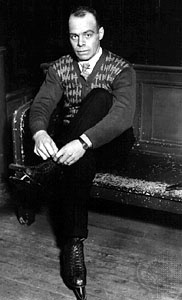 Standouts among the 464 competing athletes were speed skater Clas Thunberg (Thunberg, Clas) (Finland) and Nordic skier Johan Gröttumsbråten (Norway), who each won two gold medals. In figure skating Gillis Grafström (Grafström, Gillis) (Sweden) captured his third title, while 15-year-old Sonja Henie (Henie, Sonja) (Norway) won the first of her three gold medals. Canada continued to dominate in ice hockey. The team's obvious superiority led officials to devise a new tournament format in which Canada went straight to the final round, awaiting the winners of the three pools. Canada still won, posting victories over Sweden (11–0), Switzerland (13–0), and Great Britain (14–0). St. Moritz featured the debut of skeleton sledding, a contest in which competitors, lying headfirst on sleds, raced down the 1,213-metre- (0.75-mile-) long Cresta Run.
Standouts among the 464 competing athletes were speed skater Clas Thunberg (Thunberg, Clas) (Finland) and Nordic skier Johan Gröttumsbråten (Norway), who each won two gold medals. In figure skating Gillis Grafström (Grafström, Gillis) (Sweden) captured his third title, while 15-year-old Sonja Henie (Henie, Sonja) (Norway) won the first of her three gold medals. Canada continued to dominate in ice hockey. The team's obvious superiority led officials to devise a new tournament format in which Canada went straight to the final round, awaiting the winners of the three pools. Canada still won, posting victories over Sweden (11–0), Switzerland (13–0), and Great Britain (14–0). St. Moritz featured the debut of skeleton sledding, a contest in which competitors, lying headfirst on sleds, raced down the 1,213-metre- (0.75-mile-) long Cresta Run.Lake Placid, New York, U.S., 1932
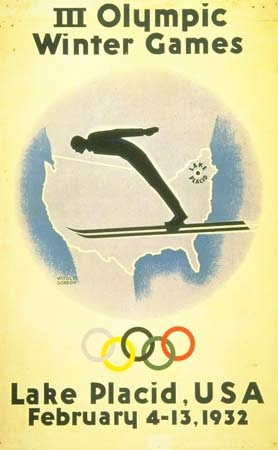 The worldwide economic depression (Great Depression) cast a shadow over the third Winter Olympics. Only 17 countries attended, represented by some 250 athletes, over half of whom were from Canada and the United States. The Games generated little revenue, and organizers, who had built a new stadium and bobsled run, suffered huge financial losses.
The worldwide economic depression (Great Depression) cast a shadow over the third Winter Olympics. Only 17 countries attended, represented by some 250 athletes, over half of whom were from Canada and the United States. The Games generated little revenue, and organizers, who had built a new stadium and bobsled run, suffered huge financial losses.Controversies surrounding the speed skating competition drew much attention. Pack-style skating was introduced, whereby the competitors raced each other instead of skating in pairs and racing against the clock. Europeans, unfamiliar with this style, fared poorly as two Americans, Irving Jaffee (Jaffee, Irving) and Jack Shea (Shea, Jack), swept the events, each winning two gold medals. Legendary Finnish speed skater Clas Thunberg (Thunberg, Clas) refused to compete, and pack skating was dropped from Olympic competition following the Lake Placid Games. Turmoil also ensued in the 1,500- and 10,000-metre events. In the former, judges stopped the second heat, claiming the skaters were “loafing,” and ordered them to start over. In the 10,000-metre event, a rule requiring each contestant to assist in setting the pace led to the disqualification of three skaters in the first heat, though protests led to the contest's being rerun.
The two-man bobsled (bobsledding) was introduced at the 1932 Games, and the American brothers J. Hubert Stevens and Curtis Stevens won gold with their practice—then highly unorthodox and now illegal—of heating the sled's runners with a blowtorch before competition. Poor weather forced the four-man bobsled competition to be completed after the closing ceremonies. Eddie Eagan (Eagan, Eddie), a member of the winning American team, became the first athlete to win a gold medal at both the Winter and Summer Games; in 1920 he had won the light heavyweight boxing title. The 1932 Games marked the final Olympic appearance of Norwegian Johan Gröttumsbråten, who helped his country capture all three medals in the Nordic combined event for the third consecutive Winter Olympics. In figure skating three-time champion Gillis Grafström (Grafström, Gillis) (Sweden) was dethroned by Austrian Karl Schäfer (Schäfer, Karl).
Garmisch-Partenkirchen, Germany, 1936
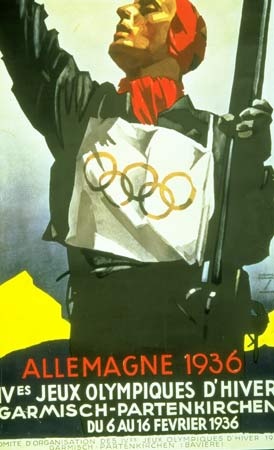 Held in a Bavarian resort, the fourth Winter Olympics were opened by Chancellor Adolf Hitler. Although not as politically charged as the 1936 Summer Games in Berlin, the event was manipulated by the Nazi regime, which suppressed unfavourable press coverage and staged lavish celebrations to mark the openings of new facilities. The IOC had forbidden Germany to exclude Jews from its Olympic team, but only one Jewish athlete represented the country—Rudi Ball, who was invited to participate on the ice hockey team after having fled Germany months before.
Held in a Bavarian resort, the fourth Winter Olympics were opened by Chancellor Adolf Hitler. Although not as politically charged as the 1936 Summer Games in Berlin, the event was manipulated by the Nazi regime, which suppressed unfavourable press coverage and staged lavish celebrations to mark the openings of new facilities. The IOC had forbidden Germany to exclude Jews from its Olympic team, but only one Jewish athlete represented the country—Rudi Ball, who was invited to participate on the ice hockey team after having fled Germany months before.For the first time female athletes were allowed to compete in a sport other than figure skating with the inclusion of the Alpine (Alpine skiing) combined, an event held over several days, which featured the downhill and two slalom runs. Over Swiss and Austrian protests, the IOC ruled that hotel ski instructors were professional athletes and thus ineligible. Germany collected the gold and silver in both the men's and the women's competition.
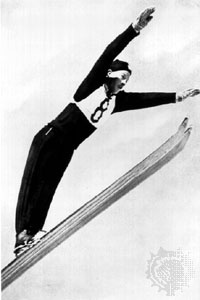 The biggest upset of the Games occurred in the ice hockey competition, Great Britain defeating Canada to win its only gold medal in the event. Controversy over the eligibility of several British players, however, clouded Britain's victory. The 1936 Games marked the end of two stellar careers. In his final Olympic appearance, speed skater Ivar Ballangrud (Ballangrud, Ivar) (Norway) turned in the most successful performance at Garmisch-Partenkirchen, winning three gold medals and one silver. After narrowly winning her third women's figure skating title, Sonja Henie (Henie, Sonja) (Norway) turned professional and pursued a career in film. Another Norwegian, Birger Ruud (Ruud, Birger), made a great impression at Garmisch-Partenkirchen, winning his second gold medal in the ski jump and placing first in the Alpine downhill race, then a demonstration event.
The biggest upset of the Games occurred in the ice hockey competition, Great Britain defeating Canada to win its only gold medal in the event. Controversy over the eligibility of several British players, however, clouded Britain's victory. The 1936 Games marked the end of two stellar careers. In his final Olympic appearance, speed skater Ivar Ballangrud (Ballangrud, Ivar) (Norway) turned in the most successful performance at Garmisch-Partenkirchen, winning three gold medals and one silver. After narrowly winning her third women's figure skating title, Sonja Henie (Henie, Sonja) (Norway) turned professional and pursued a career in film. Another Norwegian, Birger Ruud (Ruud, Birger), made a great impression at Garmisch-Partenkirchen, winning his second gold medal in the ski jump and placing first in the Alpine downhill race, then a demonstration event.St. Moritz, Switzerland, 1948
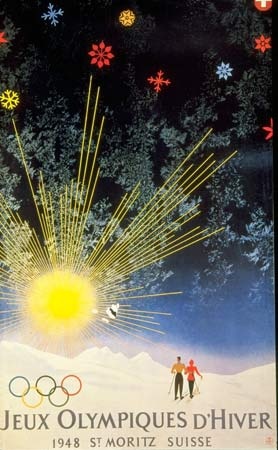 After an absence of 12 years as a result of World War II, Olympic competition returned. The Games, however, felt the effects of the war as countries were unable to properly equip their teams, forcing athletes to improvise. A shortage of money and the imposition of travel restrictions resulted in a lack of spectators. Nonetheless, St. Moritz, which (because of Swiss wartime neutrality) was undamaged by fighting, put forth a well-organized Games. Even the weather, which had caused major disruptions at the previous Games in St. Moritz (1928), cooperated, and only minor reschedulings occurred.
After an absence of 12 years as a result of World War II, Olympic competition returned. The Games, however, felt the effects of the war as countries were unable to properly equip their teams, forcing athletes to improvise. A shortage of money and the imposition of travel restrictions resulted in a lack of spectators. Nonetheless, St. Moritz, which (because of Swiss wartime neutrality) was undamaged by fighting, put forth a well-organized Games. Even the weather, which had caused major disruptions at the previous Games in St. Moritz (1928), cooperated, and only minor reschedulings occurred.Twenty-eight countries, represented by 669 athletes, attended; Japan and Germany were not invited to compete. Alpine skiing became a fully recognized discipline, with the downhill and slalom qualifying as separate events. French Alpine skier Henri Oreiller (Oreiller, Henri) turned in the most successful performance at St. Moritz, winning two gold medals and one bronze. In singles figure skating, Dick Button (Button, Dick) became the first American to earn a gold medal, and Barbara Scott (Scott, Barbara Ann) became the first and only Canadian to win the women's title.
Skeleton (skeleton sledding) (headfirst) sledding, which had not been held at the 1932 or 1936 Games, was revived for the 1948 Games but discontinued thereafter until the 2002 Winter Olympics because of the risk of injury. John Heaton (U.S.) won his second consecutive silver medal in the event, 20 years after winning his first medal at age 19. In the ski jump Birger Ruud (Ruud, Birger), a two-time gold medalist, returned as coach of the Norwegian squad. Faced with poor weather conditions, however, he pulled a less-experienced jumper and competed in his place, winning a silver medal. In ice hockey Canada regained the title against a backdrop of controversy surrounding the American squad. Two teams claimed to represent the United States—one sponsored by the U.S. Olympic Committee, another supported by the Amateur Hockey Association of the United States (AHAUS). While the IOC declared both teams ineligible, the Swiss Olympic Committee ruled that the AHAUS team could compete; the U.S. national team could participate only in the opening ceremonies. The IOC refused to sanction the competition, claiming the AHAUS club violated amateur rules. The IOC later relented, agreeing to approve the event with the condition that the AHAUS team be omitted from the standings. The team, which had finished fourth, was retroactively disqualified the following year.
Oslo, Norway, 1952
 With the awarding of the sixth Winter Olympics to Oslo, the Games were held for the first time in a Scandinavian country. Some questioned the country's ability to stage the competition, but the worries proved unfounded. New facilities were built and existing ones refurbished to meet the high Olympic standard. Oslo saw the Winter Games debut of the Olympic torch, a tradition started in the Summer Games. The torch relay began in Morgedahl, Norway, the birthplace of one of the originators of modern skiing. Germany and Japan, banned from Olympic competition following World War II, were allowed to compete at Oslo. The Games were noted for the enthusiasm of the spectators and the record number of people who watched the events.
With the awarding of the sixth Winter Olympics to Oslo, the Games were held for the first time in a Scandinavian country. Some questioned the country's ability to stage the competition, but the worries proved unfounded. New facilities were built and existing ones refurbished to meet the high Olympic standard. Oslo saw the Winter Games debut of the Olympic torch, a tradition started in the Summer Games. The torch relay began in Morgedahl, Norway, the birthplace of one of the originators of modern skiing. Germany and Japan, banned from Olympic competition following World War II, were allowed to compete at Oslo. The Games were noted for the enthusiasm of the spectators and the record number of people who watched the events.The most successful athlete at the Oslo Games was Hjallis Andersen (Andersen, Hjallis) (Norway), who dominated the speed skating competition, capturing three gold medals. He won the 5,000-metre and 10,000-metre races by the largest margins in the history of the events. Bobsledders Andreas Ostler and Lorenz Nieberl of Germany each claimed two titles. However, their victory in the four-man was marred by controversy. The total weight of the German team in the event was over 1,000 pounds (454 kg), and other teams complained that size and momentum, not skill, led to their victory. Following the Oslo Games, a weight limit of 880 pounds (400 kg) was enforced. Alpine skier Andrea Mead Lawrence (Mead Lawrence, Andrea) turned in the best performance by a female athlete, becoming the first American to win two gold medals in the Winter Games.
On the ice, American Dick Button (Button, Dick) repeated as men's figure skating champion. During his program he became the first skater to perform a triple loop. In the ice hockey competition, Canada again won the title.
In the Nordic competition the Scandinavian countries continued to dominate. In the 18-km event the top 17 skiers were from Finland, Norway, or Sweden. Veikko Hakulinen (Hakulinen, Veikko) (Finland) won the first of his seven career medals, capturing the gold in the 50-km race. In the ski jump Norway claimed the gold and silver medals. Since 1924 the country had taken 14 of the 18 medals awarded in the sport.
Cortina d'Ampezzo, Italy, 1956
 Originally awarded the 1944 Winter Games, which were canceled because of World War II, Cortina d'Ampezzo was selected to host the seventh Winter Olympics. Although the Games got off to an ominous start—the torch bearer tripped and fell during the opening ceremony—they were a resounding success. Even the threat of insufficient snow proved a needless worry as a heavy snow fell on the first day. An Italian television network carried live coverage of the Games—a first in the history of the Winter Olympics.
Originally awarded the 1944 Winter Games, which were canceled because of World War II, Cortina d'Ampezzo was selected to host the seventh Winter Olympics. Although the Games got off to an ominous start—the torch bearer tripped and fell during the opening ceremony—they were a resounding success. Even the threat of insufficient snow proved a needless worry as a heavy snow fell on the first day. An Italian television network carried live coverage of the Games—a first in the history of the Winter Olympics.Cortina d'Ampezzo was attended by more than 800 athletes representing 32 countries. The Soviet Union made its Winter Games debut and was the most successful country, claiming 16 medals, including a gold in the ice hockey competition. The Soviets' defeat of the Canadians, the reigning champions in the sport, marked the beginning of Soviet domination of international ice hockey.
Austrian Anton Sailer (Sailer, Anton) (the “Blitz from Kitz”) turned in the best individual performance at Cortina d'Ampezzo, winning the three Alpine skiing events. In figure skating the Americans, led by Hayes Alan Jenkins (Jenkins, Hayes Alan) and Tenley Albright (Albright, Tenley), dominated the singles competition, capturing all three medals in the men's event and the gold and silver in the women's contest. Finnish athletes introduced a new style of ski jumping in which the skier placed his arms at his sides while in the air instead of extending them in front. With this highly aerodynamic method, the Finns won the gold and silver medals. The speed skating events were dominated by the Soviet Union, which was led by Yevgeny Grishin (Grishin, Yevgeny), who captured two gold medals.
Squaw Valley, California, U.S., 1960
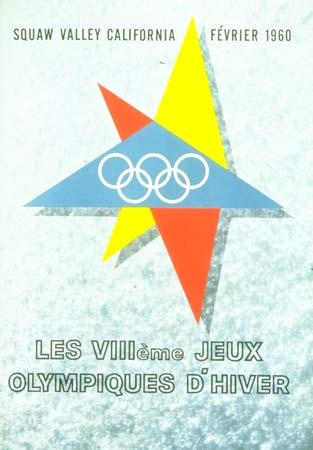 Squaw Valley was narrowly awarded the eighth Winter Olympics, beating out Innsbruck, Austria, the eventual host of the 1964 Games, by a mere two votes. Many countries protested the selection, citing Squaw Valley's lack of development—the area had only one hotel—and its high elevation—over 6,000 feet (1,800 metres) above sea level. Within four years, however, new facilities were constructed, and accommodations were made to support two million visitors. American television carried live coverage of the Games for the first time, and the opening ceremonies were managed by Walt Disney (Disney, Walt) himself. Thirty countries sent athletes to Squaw Valley, including South Africa, which made its first Winter Games appearance. The country's apartheid policy, however, led to its ban from future Olympic competition, and South Africa did not compete again until 1994.
Squaw Valley was narrowly awarded the eighth Winter Olympics, beating out Innsbruck, Austria, the eventual host of the 1964 Games, by a mere two votes. Many countries protested the selection, citing Squaw Valley's lack of development—the area had only one hotel—and its high elevation—over 6,000 feet (1,800 metres) above sea level. Within four years, however, new facilities were constructed, and accommodations were made to support two million visitors. American television carried live coverage of the Games for the first time, and the opening ceremonies were managed by Walt Disney (Disney, Walt) himself. Thirty countries sent athletes to Squaw Valley, including South Africa, which made its first Winter Games appearance. The country's apartheid policy, however, led to its ban from future Olympic competition, and South Africa did not compete again until 1994.Squaw Valley featured the debut of the biathlon and of speed skating events for female contestants, with Helga Haase (Germany) capturing the first gold medal in the sport by winning the 500-metre race. Lidiya Skoblikova (Skoblikova, Lidiya) (U.S.S.R.) was the most successful female athlete at Squaw Valley, winning the 1,500- and 5,000-metre speed skating competitions. Figure skating was a family affair as David Jenkins (Jenkins, Hayes Alan), brother of the 1956 Olympic champion, Hayes Alan Jenkins, won the men's competition. The bobsled events were not held at Squaw Valley. Because of time constraints and the limited number of competitors, organizers had decided not to build a bobsled run.
The upset at the 1960 Games occurred in the ice hockey competition with the U.S. team winning the gold medal. After recording their first-ever victory over the Soviet hockey team, the Americans came from behind to defeat the Czechoslovakian team in the final game 9–4.
Innsbruck, Austria, 1964
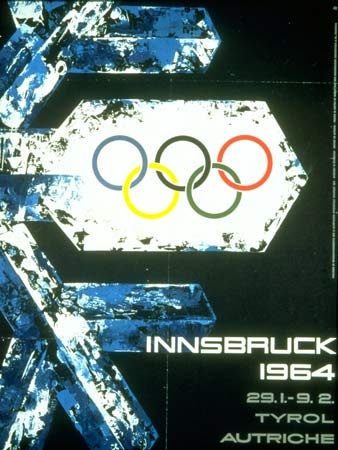 After narrowly losing the 1960 Games to Squaw Valley, California, U.S., Innsbruck was awarded the 1964 Winter Olympics. It proved well worth the wait. Innsbruck became the first Olympic city to hold events throughout the surrounding area, enabling more than one million spectators to watch the contests. In addition, more than one billion television viewers tuned in to the Games. Computers made their Olympic debut, allowing for more accurate scoring and the smoother running of events. For the first time in a Winter Games, the Olympic torch was lit in ancient Olympia, Greece, then relayed to Innsbruck. The only major problem was the lack of snow. The country suffered its mildest February in almost 60 years, forcing the Austrian army to carry in more than 25,000 tons of snow for the Alpine ski events.
After narrowly losing the 1960 Games to Squaw Valley, California, U.S., Innsbruck was awarded the 1964 Winter Olympics. It proved well worth the wait. Innsbruck became the first Olympic city to hold events throughout the surrounding area, enabling more than one million spectators to watch the contests. In addition, more than one billion television viewers tuned in to the Games. Computers made their Olympic debut, allowing for more accurate scoring and the smoother running of events. For the first time in a Winter Games, the Olympic torch was lit in ancient Olympia, Greece, then relayed to Innsbruck. The only major problem was the lack of snow. The country suffered its mildest February in almost 60 years, forcing the Austrian army to carry in more than 25,000 tons of snow for the Alpine ski events.The Games were attended by 36 countries and more than 1,000 athletes—a first for a Winter Games. Thirty-four events were staged at the Innsbruck Games, including the debut of the large-hill ski jump. Controversy surrounded the addition of the luge (lugeing) events, as many critics claimed the sport was too dangerous; two weeks before the opening ceremonies, a British luger was killed during practice. After an eight-year absence, bobsled competition returned. Great Britain's two-man team captured the country's first gold medal in the Winter Olympics since 1952. Canada entered the four-man competition for the first time and won.
Soviet pairs figure skaters Lyudmila Belousova and Oleg Protopopov (Protopopov, Oleg; and Belousova, Lyudmila) defeated their longtime rivals Marika Kilius and Hans-Jürgen Bäumler (West Germany) to win their first gold medal. In the men's figure skating competition, Scott Allen (U.S.) captured the bronze two days before his 15th birthday, becoming the youngest athlete to win a Winter Games medal. Tragedy struck the men's downhill as an Australian skier was killed during a practice run. The event was won by Egon Zimmermann (Austria), who continued the Olympic tradition of Lech, a hamlet with less than 200 residents, which had produced two other Alpine gold medalists—Othmar Schneider (1952, slalom) and Trude Beiser-Jochum (1952, downhill).
The most successful athlete at Innsbruck was Soviet speed skater Lidiya Skoblikova (Skoblikova, Lidiya), who swept all her events, winning four gold medals. In Nordic skiing Klaudia Boyarskikh (U.S.S.R.) won all three women's events, including the 5-km race, which debuted at the 1964 Games. Sisters Marielle and Christine Goitschel (Goitschel, Christine) of France finished one-two in the slalom and giant slalom; Christine won the former and Marielle the latter. The 1964 Games saw the final appearance of Sixten Jernberg (Jernberg, Sixten) (Sweden), who won the 50-km cross-country skiing event to bring his Olympic totals to four gold, three silver, and two bronze medals.
Grenoble, France, 1968
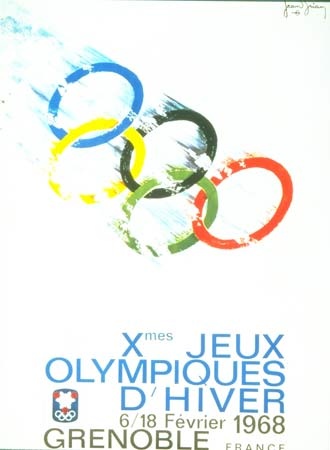 Opened by French President Charles de Gaulle, the 1968 Games were a triumph for France but were not without their share of problems. Though a great deal of money was spent to ready the industrial city of Grenoble, its lack of facilities resulted in many contests being held in outlying areas. Spectators had to travel great distances to view events, and seven separate Olympic Villages were constructed, which critics claimed detracted from the camaraderie of the Games. Grenoble also was plagued by the growing controversy over athletic endorsements. The IOC threatened to ban skiers who had advertisements on their clothing and equipment. The skiers, in turn, threatened to withdraw en masse. Eventually an agreement was reached requiring skiers to remove any advertisements before being photographed or interviewed.
Opened by French President Charles de Gaulle, the 1968 Games were a triumph for France but were not without their share of problems. Though a great deal of money was spent to ready the industrial city of Grenoble, its lack of facilities resulted in many contests being held in outlying areas. Spectators had to travel great distances to view events, and seven separate Olympic Villages were constructed, which critics claimed detracted from the camaraderie of the Games. Grenoble also was plagued by the growing controversy over athletic endorsements. The IOC threatened to ban skiers who had advertisements on their clothing and equipment. The skiers, in turn, threatened to withdraw en masse. Eventually an agreement was reached requiring skiers to remove any advertisements before being photographed or interviewed.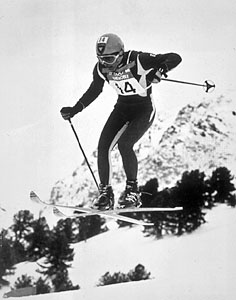 Thirty-seven countries, represented by more than 1,100 athletes, competed at Grenoble, and for the first time East and West Germany competed as separate teams. Standouts were Jean-Claude Killy (Killy, Jean-Claude) (France), who was the most successful athlete at the Games, winning all Alpine skiing events, and 40-year-old Eugenio Monti (Monti, Eugenio) (Italy), who finally succeeded in his 12-year quest for Olympic gold, winning the two-man bobsled. Nine days after that triumph, he added a second gold in the four-man competition.
Thirty-seven countries, represented by more than 1,100 athletes, competed at Grenoble, and for the first time East and West Germany competed as separate teams. Standouts were Jean-Claude Killy (Killy, Jean-Claude) (France), who was the most successful athlete at the Games, winning all Alpine skiing events, and 40-year-old Eugenio Monti (Monti, Eugenio) (Italy), who finally succeeded in his 12-year quest for Olympic gold, winning the two-man bobsled. Nine days after that triumph, he added a second gold in the four-man competition.In figure skating the Soviet pair Lyudmila Belousova and Oleg Protopopov (Protopopov, Oleg; and Belousova, Lyudmila) repeated as champions. Peggy Fleming (Fleming, Peggy) won the women's competition, the only American to win a gold medal at Grenoble. In the luge the East German women were disqualified for heating the runners of their sleds. Although several countries petitioned for the disqualification of the East German male lugers as well, they were allowed to compete.
Sapporo, Japan, 1972
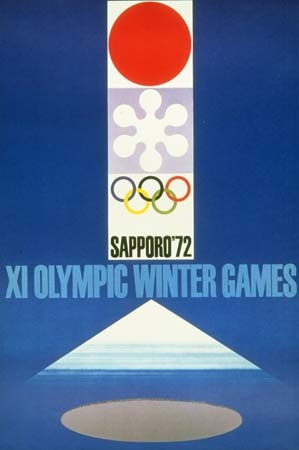 After two unsuccessful attempts to secure the Olympics, Sapporo was finally awarded the 11th Winter Games, and the Japanese government spent a great deal of money to create a memorable Olympics. The Games were the most extravagant to date. To defray the high expenses, the organizers sold the television rights for over $8 million.
After two unsuccessful attempts to secure the Olympics, Sapporo was finally awarded the 11th Winter Games, and the Japanese government spent a great deal of money to create a memorable Olympics. The Games were the most extravagant to date. To defray the high expenses, the organizers sold the television rights for over $8 million.Outgoing IOC (International Olympic Committee) president Avery Brundage (Brundage, Avery) used the 1972 Games as his last stand against the increasing number of commercial endorsements by athletes. He asked for the dismissal of some 40 skiers because of amateur rules violations. While the IOC rejected Brundage's suggestion, it did vote to ban Austrian skier Karl Schranz. An outspoken critic of Brundage, Schranz had obtained every international honour bestowed on an Alpine skier except an Olympic gold medal. Schranz, who was 33 years old, delayed his retirement to make his final Olympic appearance at Sapporo. However, the IOC banned him from the Games because he was paid by ski companies to test and develop products. Ironically, Bernhard Russi (Switzerland), who won the men's downhill, had allowed an insurance corporation to use his likeness in media advertisements.
Controversy also ensued in the ice hockey competition. Canada petitioned the IOC to use professional hockey players, claiming that the eastern European countries were using such athletes. The IOC rejected Canada's request, and the Canadian hockey team withdrew from the competition. Canada refused to send a hockey team to the 1976 Games as well. The Soviets repeated as champions at Sapporo.
Two athletes who earned gold at Sapporo went on to coach future gold medalists. Gustavo Thöni won the giant slalom, Italy's first victory in Alpine skiing in 20 years; 16 years later he would guide Alberto Tomba (Tomba, Alberto) to Olympic victory. Dianne Holum (Holum, Dianne) (U.S.) won the women's 1,500-metre speed skating event. After retiring from competition later in 1968, she became the coach of 14-year-old Eric Heiden (Heiden, Eric), who would turn in a record-breaking performance at the 1980 Games.
Standout performers at Sapporo were cross-country skier Galina Kulakova (Kulakova, Galina) (U.S.S.R.) and speed skater Ard Schenk (Schenk, Ard) (Netherlands), who each won three gold medals in their disciplines. And Japan, which had previously won only one Winter Games medal, celebrated as its men swept the medals in the normal-hill ski jump.
Innsbruck, Austria, 1976
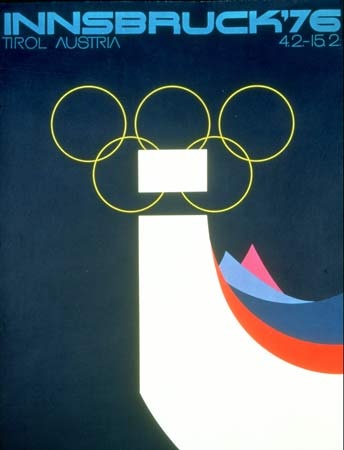 The 1976 Games were originally awarded to Denver, Colorado, U.S., but, fearing environmental damage and an increase in costs, the citizens of Colorado voted against staging the event. Denver withdrew as host, and Innsbruck was awarded its second Winter Olympics. Using facilities from the 1964 Games, Innsbruck needed to make only minor renovations to buildings. The Innsbruck Games were again a success.
The 1976 Games were originally awarded to Denver, Colorado, U.S., but, fearing environmental damage and an increase in costs, the citizens of Colorado voted against staging the event. Denver withdrew as host, and Innsbruck was awarded its second Winter Olympics. Using facilities from the 1964 Games, Innsbruck needed to make only minor renovations to buildings. The Innsbruck Games were again a success.The singles figure skating competition was reorganized. The compulsory figures, which had accounted for 50 percent of a skater's total, were reduced to 40 percent, and the skating program was divided into two routines: a short compulsory program of required moves and a longer freestyle program. Dorothy Hamill (Hamill, Dorothy) (U.S.) and John Curry (Curry, John) (U.K.) claimed gold under this new system; both were coached by Carlo Fassi (Fassi, Carlo), who had taken Peggy Fleming (Fleming, Peggy) to the title in 1968. Irina Rodnina (Rodnina, Irina) (U.S.S.R.) repeated as pairs skating champion, though she was teamed with a new partner, Aleksandr Zaytsev. Ice dancing made its Olympic debut, and the highly favoured Soviets Lyudmila Pakomova and Aleksandr Gorshkov won the gold.
In Alpine skiing Franz Klammer (Klammer, Franz) (Austria) won the demanding downhill, and Rosi Mittermaier (Mittermaier, Rosi) (West Germany), who had never won a major downhill event, captured the women's gold medal; she also won the slalom and received the silver medal in the giant slalom. Her medal total was matched by Soviet Nordic skier Raisa Smetanina (Smetanina, Raisa); the two women were the most successful athletes at the Games.
Lake Placid, New York, U.S., 1980
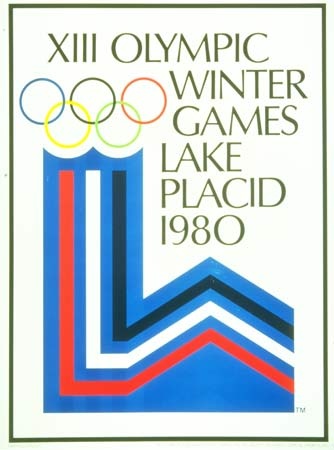 The 1980 Games marked the second time the small upstate New York town hosted the Winter Olympics. But, in the age of television and increasing numbers of spectators, Lake Placid was ill-equipped to handle the demands of a modern Games. Transportation was inadequate to move the crowds, and athletes complained about the confinement of the Olympic Village, which would later be used to house juvenile offenders. While the sports facilities were praised, they were spread throughout the area, making it difficult for spectators to view the events. In addition, organizers were forced to use artificial snow—an Olympic first. International politics also dampened the Games. Only months before, the Soviet Union had invaded Afghanistan, and U.S. President Jimmy Carter was already threatening a boycott of the 1980 Summer Games, scheduled to be held in Moscow.
The 1980 Games marked the second time the small upstate New York town hosted the Winter Olympics. But, in the age of television and increasing numbers of spectators, Lake Placid was ill-equipped to handle the demands of a modern Games. Transportation was inadequate to move the crowds, and athletes complained about the confinement of the Olympic Village, which would later be used to house juvenile offenders. While the sports facilities were praised, they were spread throughout the area, making it difficult for spectators to view the events. In addition, organizers were forced to use artificial snow—an Olympic first. International politics also dampened the Games. Only months before, the Soviet Union had invaded Afghanistan, and U.S. President Jimmy Carter was already threatening a boycott of the 1980 Summer Games, scheduled to be held in Moscow.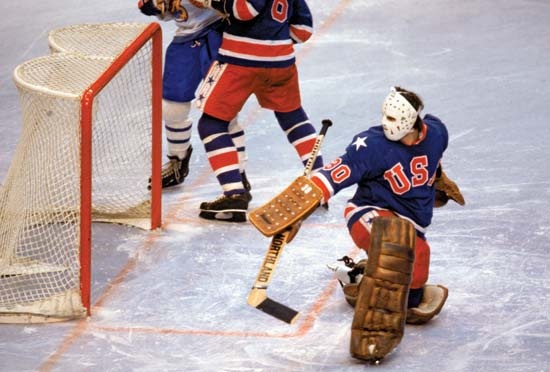 The sporting action, however, was memorable, as Lake Placid provided stunning victories for the Americans. The U.S. ice hockey team defeated the powerful Soviets, the dominant team in international hockey over the previous decade and Olympic champions since 1964, en route to winning the gold medal. Almost overshadowed by the success of the hockey team was Eric Heiden (Heiden, Eric)'s record-breaking performance as he swept the speed skating events, becoming the first athlete to win five individual gold medals at a single Olympic Games. An instant celebrity, he was uncomfortable with the media attention and later that year retired from the sport.
The sporting action, however, was memorable, as Lake Placid provided stunning victories for the Americans. The U.S. ice hockey team defeated the powerful Soviets, the dominant team in international hockey over the previous decade and Olympic champions since 1964, en route to winning the gold medal. Almost overshadowed by the success of the hockey team was Eric Heiden (Heiden, Eric)'s record-breaking performance as he swept the speed skating events, becoming the first athlete to win five individual gold medals at a single Olympic Games. An instant celebrity, he was uncomfortable with the media attention and later that year retired from the sport.The Alpine skiing competition starred a Swede and a Liechtensteiner. Ingemar Stenmark (Stenmark, Ingemar) (Sweden) captured the gold in the slalom and giant slalom only five months after suffering a serious concussion during a practice run. The leader in the women's competition was Hanni Wenzel (Wenzel, Hanni) (Liechtenstein), who won gold medals in the slalom and giant slalom and a silver in the downhill; her gold medals were the first Olympic titles for the tiny country of Liechtenstein. Her brother Andreas also won a silver medal in the downhill.
The Games marked the final appearance of one of figure skating's stars, Irina Rodnina (Rodnina, Irina) (U.S.S.R.), who won her third consecutive title in the pairs competition. Cross-country skier Nikolay Zimyatov (Zimyatov, Nikolay) (U.S.S.R.) won three gold medals, and Ivan Lebanov brought home Bulgaria's first Winter Olympic medal, a bronze in the 30-km race.
Sarajevo, Yugoslavia, 1984
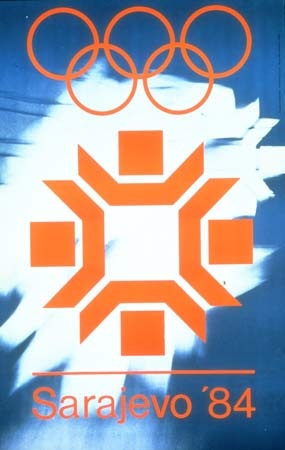 The awarding of the 14th Winter Olympics to Sarajevo (now in Bosnia and Herzegovina) caught many by surprise, including the host country, which went to work building new facilities and making improvements to others in order to accommodate the Games. The choice of Sarajevo proved appropriate, however, as the 1984 Games were highlighted by the appearance of smaller countries. In order to encourage participation, the IOC agreed to pay the expenses of one male and one female participant from each nation. Egypt, the British Virgin Islands, Monaco, Puerto Rico, and Senegal made their Winter Olympics debuts as a record number of countries (49) competed at Sarajevo. The Olympics were a triumph for Yugoslavia.
The awarding of the 14th Winter Olympics to Sarajevo (now in Bosnia and Herzegovina) caught many by surprise, including the host country, which went to work building new facilities and making improvements to others in order to accommodate the Games. The choice of Sarajevo proved appropriate, however, as the 1984 Games were highlighted by the appearance of smaller countries. In order to encourage participation, the IOC agreed to pay the expenses of one male and one female participant from each nation. Egypt, the British Virgin Islands, Monaco, Puerto Rico, and Senegal made their Winter Olympics debuts as a record number of countries (49) competed at Sarajevo. The Olympics were a triumph for Yugoslavia.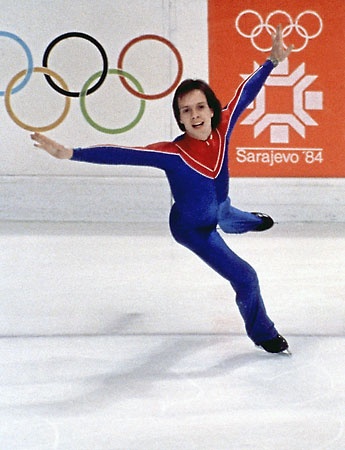 Much of the Games' excitement occurred in the figure skating events. Gold-medal-winning ice dancers Jayne Torvill and Christopher Dean (Torvill and Dean) (U.K.) redefined the sport with their mesmerizing interpretation of Maurice Ravel's Boléro. The women's event featured the Olympic debut of Katarina Witt (Witt, Katarina) (East Germany), who narrowly defeated the defending world champion Rosalynn Sumners (U.S.) for the gold medal. In the men's competition Scott Hamilton (Hamilton, Scott) (U.S.) edged out Brian Orser (Canada) to win the gold. The pairs title went to Soviets Oleg Vasilyev and Yelena Valova.
Much of the Games' excitement occurred in the figure skating events. Gold-medal-winning ice dancers Jayne Torvill and Christopher Dean (Torvill and Dean) (U.K.) redefined the sport with their mesmerizing interpretation of Maurice Ravel's Boléro. The women's event featured the Olympic debut of Katarina Witt (Witt, Katarina) (East Germany), who narrowly defeated the defending world champion Rosalynn Sumners (U.S.) for the gold medal. In the men's competition Scott Hamilton (Hamilton, Scott) (U.S.) edged out Brian Orser (Canada) to win the gold. The pairs title went to Soviets Oleg Vasilyev and Yelena Valova.On the slopes the U.S. ski team was especially successful. American Bill Johnson captured the first-ever U.S. gold medal in the downhill event. In the men's slalom twin brothers Phil and Steve Mahre (U.S.) took the gold and silver, respectively. Debbie Armstrong (U.S.) won her first and only international race, capturing gold in the giant slalom. Conspicuously absent from the Alpine events were 1980 gold medalists Ingemar Stenmark (Stenmark, Ingemar) (Sweden) and Hanni Wenzel (Wenzel, Hanni) (Liechtenstein), who were considered professionals and were thus banned from Olympic competition.
The most successful athlete at Sarajevo was Nordic skier Marja-Liisa Hämäläinen (Hämäläinen, Marja-Liisa) (Finland), who captured three gold medals and one bronze. In the ski jump competition, Finn Matti Nykänen (Nykänen, Matti) won the large hill by the biggest margin in the history of the sport. He also added a silver medal in the normal hill event. The East German women dominated the speed skating competition, led by Karin Enke (Enke, Karin) (two gold and two silver medals), Andrea Schöne (one gold and two silver), and Christa Luding-Rothenburger (Luding-Rothenburger, Christa) (one gold). In the men's events Gaétan Boucher (Canada) captured two gold medals and one bronze.
The Soviet Union regained the title in ice hockey to match Canada's record of six Olympic gold medals in the sport. The Soviets were led by the outstanding goaltending of Vladislav Tretiak (Tretiak, Vladislav), who allowed only five goals in seven games. It was his third gold medal.
Calgary, Alberta, Canada, 1988
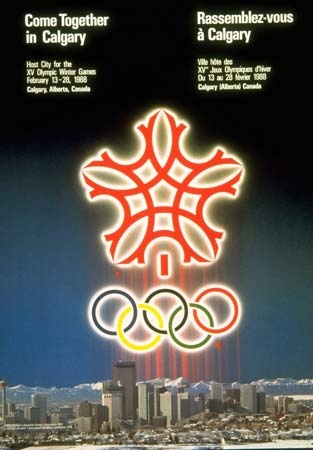 The city of Calgary first organized a bidding committee for the Winter Olympics in 1957; 24 years later it was awarded the 15th Winter Games. The influence of television on the Games spread even deeper. The American Broadcasting Company (ABC) paid $309 million for the television rights, and advertisers were able to influence the starting times of events to maximize their products' exposure. Many charged that the Games resembled well-rehearsed shows instead of sporting contests.
The city of Calgary first organized a bidding committee for the Winter Olympics in 1957; 24 years later it was awarded the 15th Winter Games. The influence of television on the Games spread even deeper. The American Broadcasting Company (ABC) paid $309 million for the television rights, and advertisers were able to influence the starting times of events to maximize their products' exposure. Many charged that the Games resembled well-rehearsed shows instead of sporting contests.In figure skating Katarina Witt (Witt, Katarina) (East Germany) retained her title in the women's event. The men's figure skating competition was dubbed the “Battle of the Brians” as Brian Boitano (Boitano, Brian) (U.S.) and Brian Orser (Canada) vied for the gold. Though Orser held the edge in international competition, Boitano was victorious at Calgary, skating a nearly perfect performance to narrowly defeat his Canadian rival.
In the Alpine events the supergiant slalom (super-G) was added, and the Alpine combined returned after being absent from the Olympics for 40 years. The stars on the slopes were the flamboyant Alberto Tomba (Tomba, Alberto) (Italy) and Vreni Schneider (Schneider, Vreni) (Switzerland), each of whom won gold in both the slalom and giant slalom events.
The women's speed skating competition was marked by upsets. While most attention was focused on the East German women and the American Bonnie Blair (Blair, Bonnie), Yvonne van Gennip (van Gennip, Yvonne) of The Netherlands dominated, winning three gold medals. Blair and Christa Luding-Rothenburger (Luding-Rothenburger, Christa) (East Germany) claimed the other two golds.
Nordic skiing underwent numerous modifications at Calgary. Team competitions were added in the Nordic combined and the ski jumping events. Cross-country events were revamped because of the “skating technique,” which was introduced at the 1984 Games. The men's 15- and 30-km races and the women's 5- and 10-km races were skied using the classic style. The longer distances and relay events used the freestyle, or skating, method. Ski jumping was dominated by Matti Nykänen (Nykänen, Matti) (Finland), whose three gold medals made him the most successful male athlete at Calgary.
Albertville, France, 1992
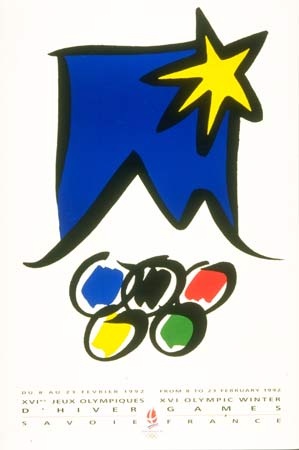 The 1992 Games are noted for not only a change in the modern Olympics but a change in the world as well. It was the last time that the Summer and Winter Games would be held in the same year; the next winter competition was scheduled for 1994, while the summer events were slated for 1996. The Games also reflected the changing political climate in central and eastern Europe. Competing as the Unified Team (UT), athletes from the former Soviet republics participated as a single team for the last time. The German squad was reunited following the fall of the Berlin Wall (1989), and Lithuania, Latvia, and Estonia competed as independent countries for the first time in over 50 years.
The 1992 Games are noted for not only a change in the modern Olympics but a change in the world as well. It was the last time that the Summer and Winter Games would be held in the same year; the next winter competition was scheduled for 1994, while the summer events were slated for 1996. The Games also reflected the changing political climate in central and eastern Europe. Competing as the Unified Team (UT), athletes from the former Soviet republics participated as a single team for the last time. The German squad was reunited following the fall of the Berlin Wall (1989), and Lithuania, Latvia, and Estonia competed as independent countries for the first time in over 50 years.France's bid for the 16th Winter Olympics was led by three-time gold medalist Jean-Claude Killy (Killy, Jean-Claude), who wanted to revive the economy of the Savoy region. Sixty-four countries attended, sending approximately 1,800 athletes. The number of events reached 57 as short-track speed skating and freestyle skiing were introduced.
The Albertville Games were highlighted by outstanding performances in the Nordic events. Lyubov Yegorova (Yegorova, Lyubov) (UT) won three gold and two silver medals in cross-country skiing to become the most successful performer at Albertville. In the men's cross-country, Norwegians Vegard Ulvang (Ulvang, Vegard) and Bjørn Daehlie (Daehlie, Bjørn) dominated the competition, winning three gold medals each. Ski jumper Toni Nieminen, a 16-year-old Finn, used the new V-style method to capture two gold medals and one bronze. Women's biathlon events were introduced, and the 7.5-km event was won by Anfisa Retsova (UT), who, having won gold in the cross-country relay in 1988, became the first woman to win a gold medal in two different winter sports.
The men's Alpine skiing events were overwhelmed by the fervent fans of Alberto Tomba (Tomba, Alberto). About 15,000 Italians traveled to Albertville to witness Tomba's races in the slalom and giant slalom. Their hero won the gold medal in the giant slalom but, despite a great second run, had to settle for a silver medal in the slalom.
The most successful speed skater was Gunda Niemann (Germany), with a tally of two gold medals and one silver. Bonnie Blair (Blair, Bonnie) won the 500- and 1,000-metre events, bringing her Olympic total to three gold medals, a first for an American woman. The comeback story in speed skating was Norwegian Johann Olav Koss (Koss, Johann Olav). On the day of the opening ceremony, he was in a hospital, suffering from an inflamed pancreas. After passing a gallstone, he was released, whereupon he immediately resumed training. Less than a week later, he won the 1,500-metre event. The figure skating competition was highlighted by the gold medal performance of American Kristi Yamaguchi.
Lillehammer, Norway, 1994
 After only a two-year interlude, the Olympic Winter Games returned in 1994, when a 1986 amendment to the Olympic Charter calling for the Summer and Winter Games to be held alternately every two years went into effect. Awarded to Lillehammer, the 1994 Olympics were noteworthy for their environmental conservation. While numerous facilities had to be built to accommodate the events, measures were taken to protect the land. Contractors were fined for cutting down too many trees, the hockey rink was set into the side of a mountain to conserve energy, and buildings were constructed with future use in mind.
After only a two-year interlude, the Olympic Winter Games returned in 1994, when a 1986 amendment to the Olympic Charter calling for the Summer and Winter Games to be held alternately every two years went into effect. Awarded to Lillehammer, the 1994 Olympics were noteworthy for their environmental conservation. While numerous facilities had to be built to accommodate the events, measures were taken to protect the land. Contractors were fined for cutting down too many trees, the hockey rink was set into the side of a mountain to conserve energy, and buildings were constructed with future use in mind.Sixty-seven countries, represented by more than 1,700 athletes, attended the Games. With the disbanding of the Unified Team, the republics of the former Soviet Union competed as separate teams. After ending its policy of apartheid, South Africa participated for the first time in 34 years. The number of events also increased as more short-track speed skating and freestyle skiing contests were added.
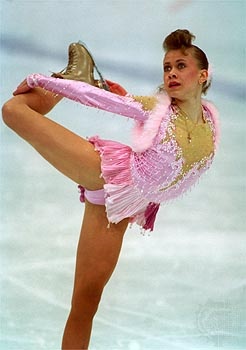 With the change in the IOC's rules regarding amateur status and participation, professional athletes were allowed to compete at Lillehammer. The sport most affected by this change was figure skating, with the return of past Olympic champions—American Brian Boitano (Boitano, Brian), German Katarina Witt (Witt, Katarina), British ice dancers Jayne Torvill and Christopher Dean (Torvill and Dean), and Russian pairs skaters Yekaterina Gordeeva and Sergey Grinkov (Gordeeva, Yekaterina; and Grinkov, Sergey). Among these past champions, however, only Gordeeva and Grinkov managed to earn a gold medal at Lillehammer. In the women's competition the major story centred on Americans Nancy Kerrigan and Tonya Harding. About a month before the Games were to begin, Harding was implicated in an attempt to injure Kerrigan. Harding filed a lawsuit against the U.S. Olympic Committee, seeking an injunction against being barred from the Olympics. However, the legal dispute temporarily abated, and both skaters showed up in Lillehammer. The showdown never materialized as Harding stumbled in her short program, eventually finishing eighth. Although Kerrigan skated a nearly flawless program, she was narrowly defeated by Oksana Baiul, a 16-year-old skater from Ukraine.
With the change in the IOC's rules regarding amateur status and participation, professional athletes were allowed to compete at Lillehammer. The sport most affected by this change was figure skating, with the return of past Olympic champions—American Brian Boitano (Boitano, Brian), German Katarina Witt (Witt, Katarina), British ice dancers Jayne Torvill and Christopher Dean (Torvill and Dean), and Russian pairs skaters Yekaterina Gordeeva and Sergey Grinkov (Gordeeva, Yekaterina; and Grinkov, Sergey). Among these past champions, however, only Gordeeva and Grinkov managed to earn a gold medal at Lillehammer. In the women's competition the major story centred on Americans Nancy Kerrigan and Tonya Harding. About a month before the Games were to begin, Harding was implicated in an attempt to injure Kerrigan. Harding filed a lawsuit against the U.S. Olympic Committee, seeking an injunction against being barred from the Olympics. However, the legal dispute temporarily abated, and both skaters showed up in Lillehammer. The showdown never materialized as Harding stumbled in her short program, eventually finishing eighth. Although Kerrigan skated a nearly flawless program, she was narrowly defeated by Oksana Baiul, a 16-year-old skater from Ukraine.In the Alpine skiing events Markus Wasmeier (Germany) was the male standout, winning the giant slalom and the supergiant slalom. Vreni Schneider (Schneider, Vreni) (Switzerland) won the slalom, becoming the first female Alpine skier to win three Olympic gold medals. She also won a silver and a bronze medal at Lillehammer. Canadian Myriam Bédard (Bédard, Myriam) won two gold medals in the biathlon.
The most successful athletes at Lillehammer were Manuela Di Centa (Di Centa, Manuela), an Italian cross-country skier who won five medals, including two gold, and Russian Nordic skier Lyubov Yegorova (Yegorova, Lyubov), who won three gold and one silver. Nearly matching their performances was another Nordic skier, Bjørn Daehlie (Daehlie, Bjørn) (Norway), who captured two gold medals and two silver. Vladimir Smirnov won a gold and two silver medals in cross-country skiing, the first medals ever for Kazakhstan.
In speed skating Bonnie Blair (Blair, Bonnie) won two gold medals, bringing her Olympic total to five gold medals, the most for an American athlete in the history of the Winter Olympics. Norwegian Johann Olav Koss (Koss, Johann Olav) thrilled the home crowd with three gold medals in the long-distance skating events, and American Daniel Jansen (Jansen, Daniel) overcame six years of Olympic frustration by winning the gold medal in the 1,000-metre race. The South Koreans dominated short-track speed skating, winning four events.
Nagano, Japan, 1998
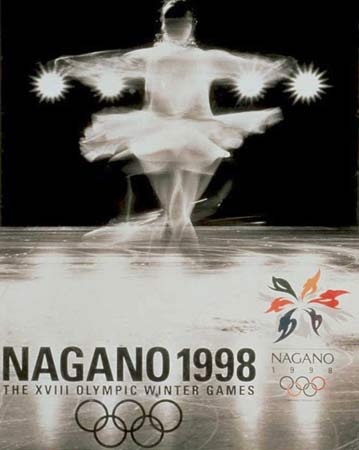 Twenty-six years after the Sapporo Games, the Winter Olympics returned to Japan. The most memorable aspect of the Nagano Games was arguably the weather, which brought heavy snow and periods of freezing rain. There was even an earthquake. The Alpine skiing competition was most affected by the heavy snows that caused several events to be rescheduled. The earthquake, which occurred on February 20, was of moderate magnitude but was felt throughout the city and in the smaller towns that served as sports venues. Despite these obstacles, the Games were praised for their organization and efficiency. Many also praised Nagano for tempering the influence of corporate sponsors that had been so intrusive at the Atlanta Summer Games in 1996.
Twenty-six years after the Sapporo Games, the Winter Olympics returned to Japan. The most memorable aspect of the Nagano Games was arguably the weather, which brought heavy snow and periods of freezing rain. There was even an earthquake. The Alpine skiing competition was most affected by the heavy snows that caused several events to be rescheduled. The earthquake, which occurred on February 20, was of moderate magnitude but was felt throughout the city and in the smaller towns that served as sports venues. Despite these obstacles, the Games were praised for their organization and efficiency. Many also praised Nagano for tempering the influence of corporate sponsors that had been so intrusive at the Atlanta Summer Games in 1996.A record number of national Olympic committees (72) and athletes (more than 2,100) participated in the Nagano Games. Among the countries attending were Bosnia and Herzegovina and Yugoslavia, which were embroiled in a war. In accordance with a United Nations resolution, both countries honoured a cease-fire for the duration of the Games. Two new sports, curling and snowboarding, were added to the Winter Olympic program. Snowboarding made a somewhat ignominious debut when Canadian Ross Rebagliati, the sport's first Olympic gold medalist, tested positive for marijuana use; he was promptly disqualified. A day later the decision was overturned on appeal, and Rebagliati was able to keep his medal. The program was also expanded to include a women's ice hockey tournament, which was won by the United States. The Czech Republic's team, inspired by the play of goalie Dominik Hasek, was the surprise winner of the men's tournament. In speed skating Dutch skaters, led by Gianni Romme and Marianne Timmer, collected five gold medals, four silver, and two bronze. Victories by youngsters Ilia Kulik of Russia and Tara Lipinski of the United States in the singles figure skating events came as mild surprises.
After a frightening tumble down the mountainside in the downhill event, Austrian Alpine skier Hermann Maier returned to the slopes to capture the gold medal in both the supergiant slalom and the giant slalom. The women's competition starred German sensation Katja Seizinger, who won the downhill and Alpine combined events. In Nordic skiing, Bjørn Daehlie (Daehlie, Bjorn) of Norway further strengthened his claim to being the greatest cross-country skier ever. The Norwegian skied to gold medals in the 10-km event and the 4 × 10-km relay and a silver in the 15-km event, bringing his Olympic career totals to eight gold medals and four silver. Also laying claim to the “best ever” title in his sport was German luger Georg Hackl (Hackl, Georg), who won an unprecedented third consecutive gold medal in the singles event.
While Germany took home more medals (29) than any other nation, the host country, Japan, enjoyed its best showing in the Winter Olympics, earning 10 medals. Ski jumper Kazuyoshi Funaki soared to the gold medal on the 120-metre hill and a silver on the 90-metre hill and led a dramatic victory in the team ski jumping event. Hiroyasu Shimizu took home the gold medal in the 500-metre speed skating event and the bronze in the 100-metre. Japan's only female gold medalist was freestyle skier Tae Satoya, who won the moguls competition.
Salt Lake City, Utah, U.S., 2002
Scandal and fears of terrorism marked the 2002 Games long before the Olympic torch arrived in Salt Lake City. In November 1998 the first allegation of bribery and misuse of funds by the Salt Lake Organizing Committee (SLOC) emerged. Investigations by the U.S. government and the IOC soon revealed that the SLOC had doled out cash gifts, college scholarships, medical treatment, and lavish vacations to IOC (International Olympic Committee) members both before and after the Salt Lake City bid was accepted. In the end four IOC officials were forced to resign as well as the two top executives of the SLOC. Following the scandal came the September 11 terrorist attacks (September 11 attacks) on New York City and Washington, D.C., and the subsequent “war on terrorism.” With dramatically tightened security measures in place and an intense mood of nationalism in the United States, some were concerned that the spirit of international unity so central to Olympism might be lost. In the end the Salt Lake City Games proved to be peaceful, friendly, and entertaining, though not without controversy.
The subjectivity of scoring in figure skating exploded in controversy during the pairs competition, when the Canadian pair Jamie Salé and David Pelletier, who skated a flawless final program, scored lower than Russians Yelena Berezhnaya and Anton Sikharulidze, who had made several errors in their performance. After the competition, a judge admitted that she had been coerced into voting for the Russian pair by a skating official but later recanted her story. The resulting uproar from the public and the IOC pressured the International Skating Federation to award a second pair of gold medals to the Canadian team.
Some 2,400 athletes representing 77 NOCs from places as unlikely as Cameroon, Kenya, India, Brazil, Iran, Thailand, and Fiji competed in 78 events, which included the return of skeleton sledding and the debut of women's bobsledding. Stars of the Games included Norwegian Ole Einar Bjørndalen, who won four gold medals in the men's biathlon; Croatian Janica Kostelic, who captured three gold medals and a silver in Alpine skiing; and Samppa Lajunen of Finland, who won all three Nordic combined events. The Salt Lake Games also saw bobsledder Vonetta Flowers become the first black athlete to win a Winter gold medal. Canadian hockey player Jarome Ingila then became the first black male athlete to win Winter gold, and short-track speed skater Yang Yang became the first Chinese athlete to win a gold medal at the Winter Games.
Turin, Italy, 2006
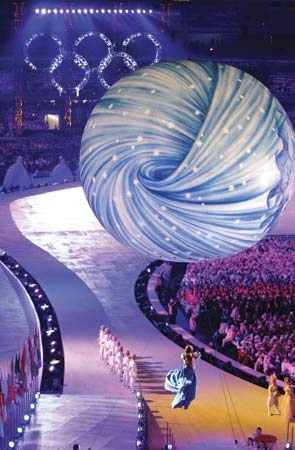 The Winter Games returned to Italy after a 50-year absence. Unlike the 1956 Games, which were held in the small resort town of Cortina d'Ampezzo, the 2006 Games were hosted by Turin, an industrial city and provincial capital located in northwestern Italy. The competition venues were spread between seven villages (most in the mountainous Piedmont region to the west) and Turin, and beforehand there was some concern that the widespread Games would suffer from logistics problems and low attendance. The concerns proved to be unfounded, as the competitions were both exciting and well-attended. The festive side of the Games was greatly helped by the nightly medal ceremonies held in the Piazza Castello, Turin's main piazza. IOC president Jacques Rogge, impressed with the large, happy crowds that the medal ceremonies routinely attracted, suggested that the concept be carried over to subsequent Olympiads.
The Winter Games returned to Italy after a 50-year absence. Unlike the 1956 Games, which were held in the small resort town of Cortina d'Ampezzo, the 2006 Games were hosted by Turin, an industrial city and provincial capital located in northwestern Italy. The competition venues were spread between seven villages (most in the mountainous Piedmont region to the west) and Turin, and beforehand there was some concern that the widespread Games would suffer from logistics problems and low attendance. The concerns proved to be unfounded, as the competitions were both exciting and well-attended. The festive side of the Games was greatly helped by the nightly medal ceremonies held in the Piazza Castello, Turin's main piazza. IOC president Jacques Rogge, impressed with the large, happy crowds that the medal ceremonies routinely attracted, suggested that the concept be carried over to subsequent Olympiads.The Games were attended by approximately 2,600 athletes representing 80 countries. New events included speed skating team pursuit, mass-start biathlon races, and snowboard cross, which pits four boarders against each other in a thrilling race downhill through a series of jumps and sharp turns. The women's snowboard cross final produced the most drama when American Lindsey Jacobellis, who seemed assured of victory after the other three racers fell at the top of the course, took a tumble on the last jump and was passed by Switzerland's Tanja Frieden. American snowboarder Shaun White (White, Shaun), known as the “Flying Tomato” because of his long red hair, entertained onlookers with his back-to-back 1080s (three full turns in the air) on his way to claiming the gold medal in the halfpipe competition.
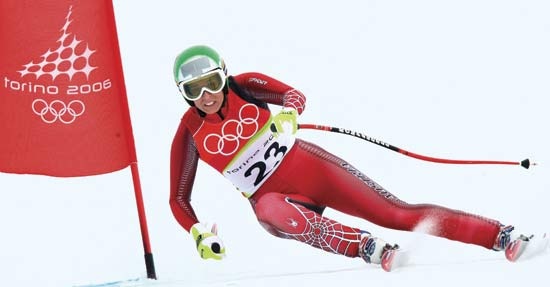 The Alpine competition was marked by the surprising success of the Austrian skiers, who won 14 medals in all, including gold medals in the women's downhill and super-G by Michaela Dorfmeister, and by the disappointing performance of the American team led by World Cup champion Bode Miller, who was entered in five events but earned no Olympic medals. Michael Greis of Germany won three gold medals in biathlon events, but his success was overshadowed by the drug controversies in the Nordic skiing competition. Olga Pyleva, a Russian silver medalist in the biathlon, was disqualified after failing her drug test. Coach Walter Mayer, who had been banned for suspicion of blood doping, was discovered in the Austrian camp, resulting in an investigation of 10 athletes.
The Alpine competition was marked by the surprising success of the Austrian skiers, who won 14 medals in all, including gold medals in the women's downhill and super-G by Michaela Dorfmeister, and by the disappointing performance of the American team led by World Cup champion Bode Miller, who was entered in five events but earned no Olympic medals. Michael Greis of Germany won three gold medals in biathlon events, but his success was overshadowed by the drug controversies in the Nordic skiing competition. Olga Pyleva, a Russian silver medalist in the biathlon, was disqualified after failing her drug test. Coach Walter Mayer, who had been banned for suspicion of blood doping, was discovered in the Austrian camp, resulting in an investigation of 10 athletes.The Russian team dominated the figure skating competition, collecting three gold medals and a bronze. Men's champion Yevgeny Plushchenko and pairs champions Tatyana Totmyanina and Maksim Marinin gave exceptionally brilliant performances, while ice dancing gold medalists Tatyana Navka and Roman Kostomarov skated without mistakes to win a somewhat lacklustre competition. Irina Slutskaya, the favourite in the women's competition, had to settle for the bronze medal after Japan's Arakawa Shizuka gave a dazzling performance to win her nation's first gold medal in that event.
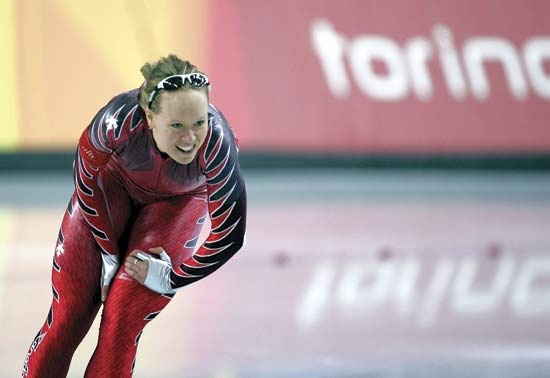 Canadian Cindy Klassen (Klassen, Cindy) and Italian Enrico Fabris were the stars of the speed skating competition. Klassen won five medals in all—one gold, two silver, and two bronze. The young Italian collected two gold and a bronze, outshining American favourites Chad Hedrick and Shani Davis. German speed skater Claudia Pechstein won two medals in Turin, bringing her career total to nine and making her the top medal winner in her sport's Olympic history. Ahn Hyun-soo (Ahn Hyun Soo) of South Korea dominated the short-track skating, winning three gold medals and one bronze.
Canadian Cindy Klassen (Klassen, Cindy) and Italian Enrico Fabris were the stars of the speed skating competition. Klassen won five medals in all—one gold, two silver, and two bronze. The young Italian collected two gold and a bronze, outshining American favourites Chad Hedrick and Shani Davis. German speed skater Claudia Pechstein won two medals in Turin, bringing her career total to nine and making her the top medal winner in her sport's Olympic history. Ahn Hyun-soo (Ahn Hyun Soo) of South Korea dominated the short-track skating, winning three gold medals and one bronze.The Winter Olympics were scheduled to be held in Vancouver, British Columbia, Canada, in 2010.
Additional Reading
General studies of ancient Greek athletics include Mark Golden, Sport and Society in Ancient Greece (1998); H.A. Harris, Greek Athletes and Athletics (1964, reissued 1979); E. Norman Gardiner, Athletics of the Ancient World (1930, reprinted 2002); and Stephen G. Miller, Ancient Greek Athletics (2004). The history of the ancient Olympic Games is examined in M.I. Finley and H.W. Pleket, The Olympic Games: The First Thousand Years (1976); and David C. Young, A Brief History of the Olympic Games (2004).William Mellors Henry and Patricia Henry Yeomans, An Approved History of the Olympic Games, new ed. (1988); and Nicolaos Yalouris (ed.), The Eternal Olympics, trans. from Greek (1979), are reports of the Games up to modern times. Konstantinos Georgiadou, Olympic Revival (2003); and David C. Young, The Modern Olympics: A Struggle for Revival (1996), use original 19th-century documents to examine the origins of the modern Olympics. Jeffrey O. Segrave and Donald Chu (eds.), The Olympic Games in Transition (1988), explores the development of and changes in the modern Games, and their Olympism (1981) focuses on the philosophy of the Olympics. Olympism is further analyzed in John Hoberman, The Olympic Crisis: Sport, Politics, and the Moral Order (1986). David B. Kanin, A Political History of the Olympic Games (1981), is an important study of the political aspects of the Games. An analysis of politics as well as athletics is found in Allen Guttmann, The Olympics: A History of the Modern Games, 2nd ed. (2002). Bill Mallon, The Olympics: A Bibliography (1984), covers the Games from 1896 to 1980. Ian Buchanan and Bill Mallon, Historical Dictionary of the Olympic Movement (1995), is a concise but comprehensive reference work. John A. Lucas, Future of the Olympic Games (1992), addresses various problems of the modern Games and proposes solutions. Robert K. Barney, Stephen R. Wenn, and Scott G. Martyn, Selling the Five Rings: The International Olympic Committee and the Rise of Olympic Commercialism (2002), is a thorough history of the growth of commercialism in the Games.Pierre de Coubertin, Olympic Memoirs (1979, reprinted 1997; originally published in French, 1931), is an autobiographical record of the author's contribution to the modern Games. John J. MacAloon, This Great Symbol: Pierre de Coubertin and the Origins of the Modern Olympic Games (1981), is a scholarly biography. Allen Guttmann, The Games Must Go On: Avery Brundage and the Olympic Movement (1984), concentrates on Brundage's tenure as president of the IOC (1948–72). Lord Killanin (Michael Morris, Baron Killanin), My Olympic Years (1983), provides a personal account of Killanin's time as IOC president (1972–80). Ed.
- Gedling
- Gedrosia
- Ged, William
- Gee, Kenneth
- Geel
- Geelong
- Gee, Maurice
- Geer, Dirk Jan de
- Geertgen Tot Sint Jans
- Geert Groote
- Geertz, Clifford
- Geesink, Anton
- Gegenbaur, Karl
- gegenschein
- Gehenna
- gehlenite
- Gehrig, Lou
- Gehry, Frank O.
- Geibel, Emanuel
- Geiger, Abraham
- Geiger counter
- Geiger, Hans
- Geiger, Rudolf Oskar Robert Williams
- Geiger, Theodor Julius
- Geijer, Erik Gustaf